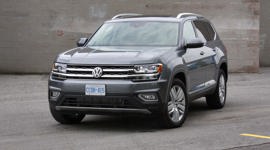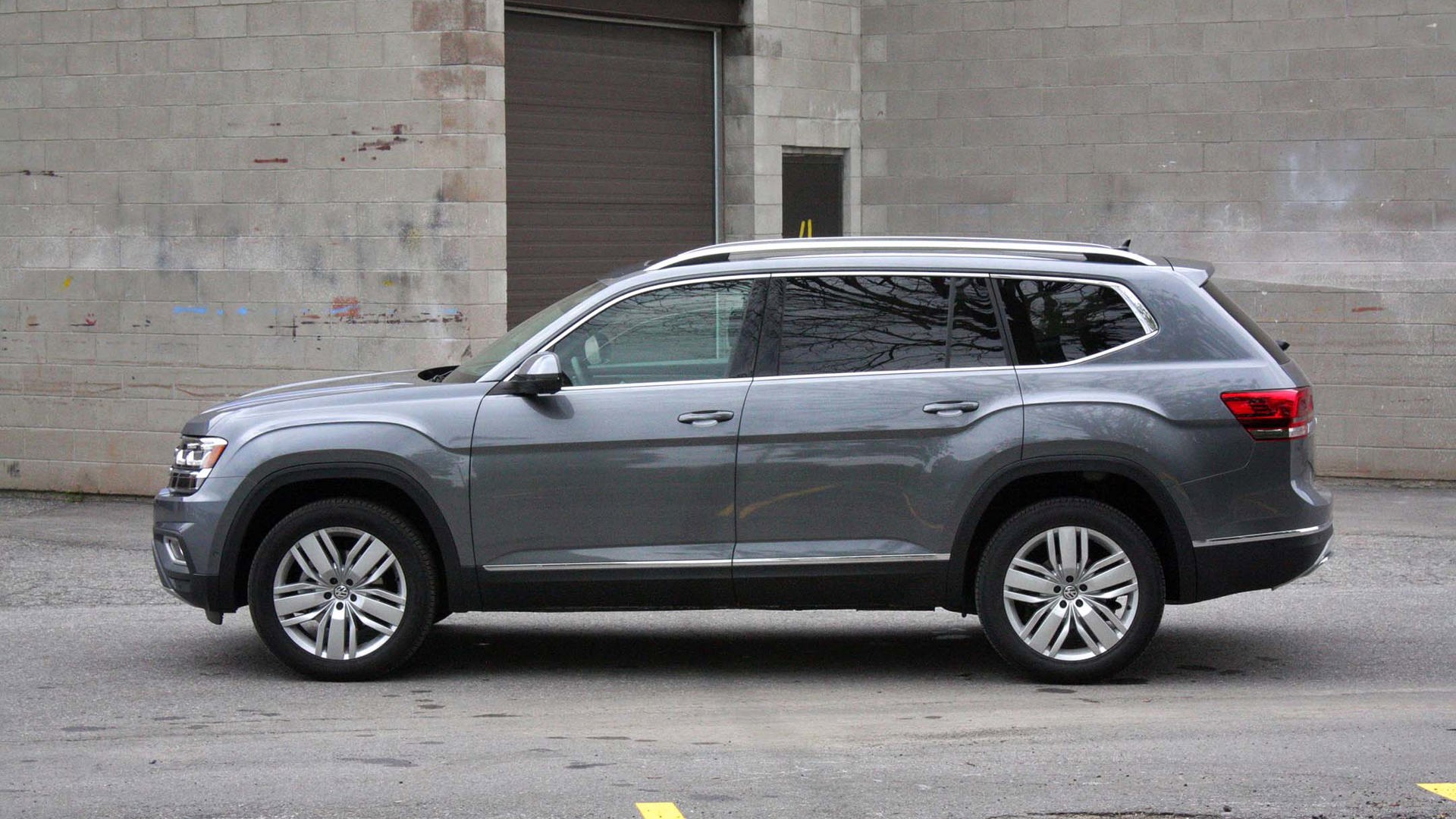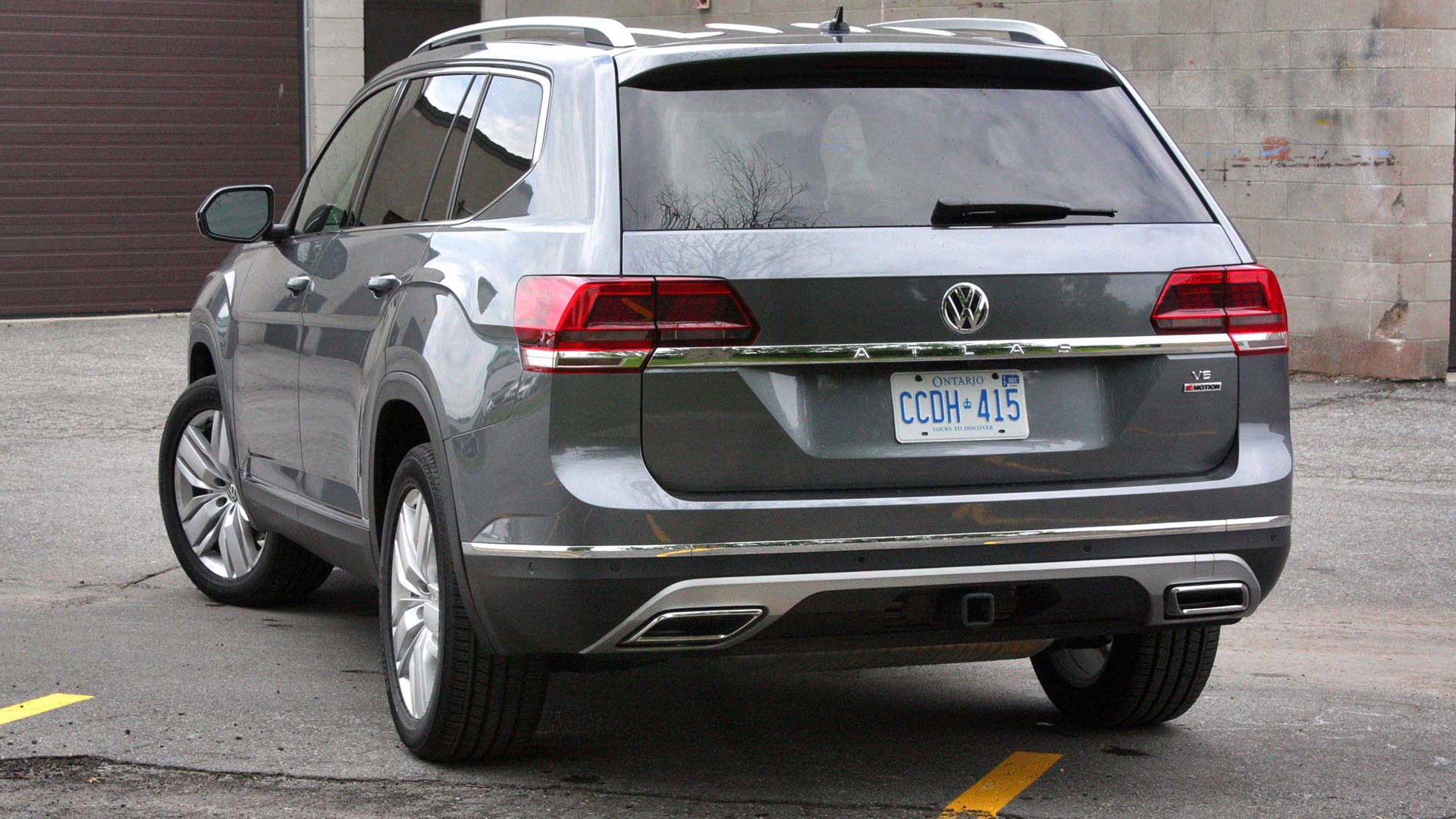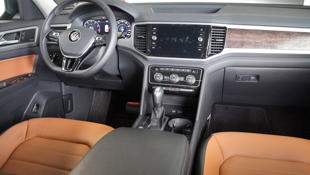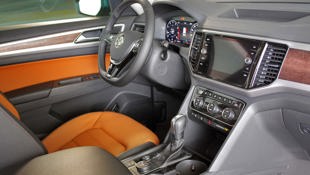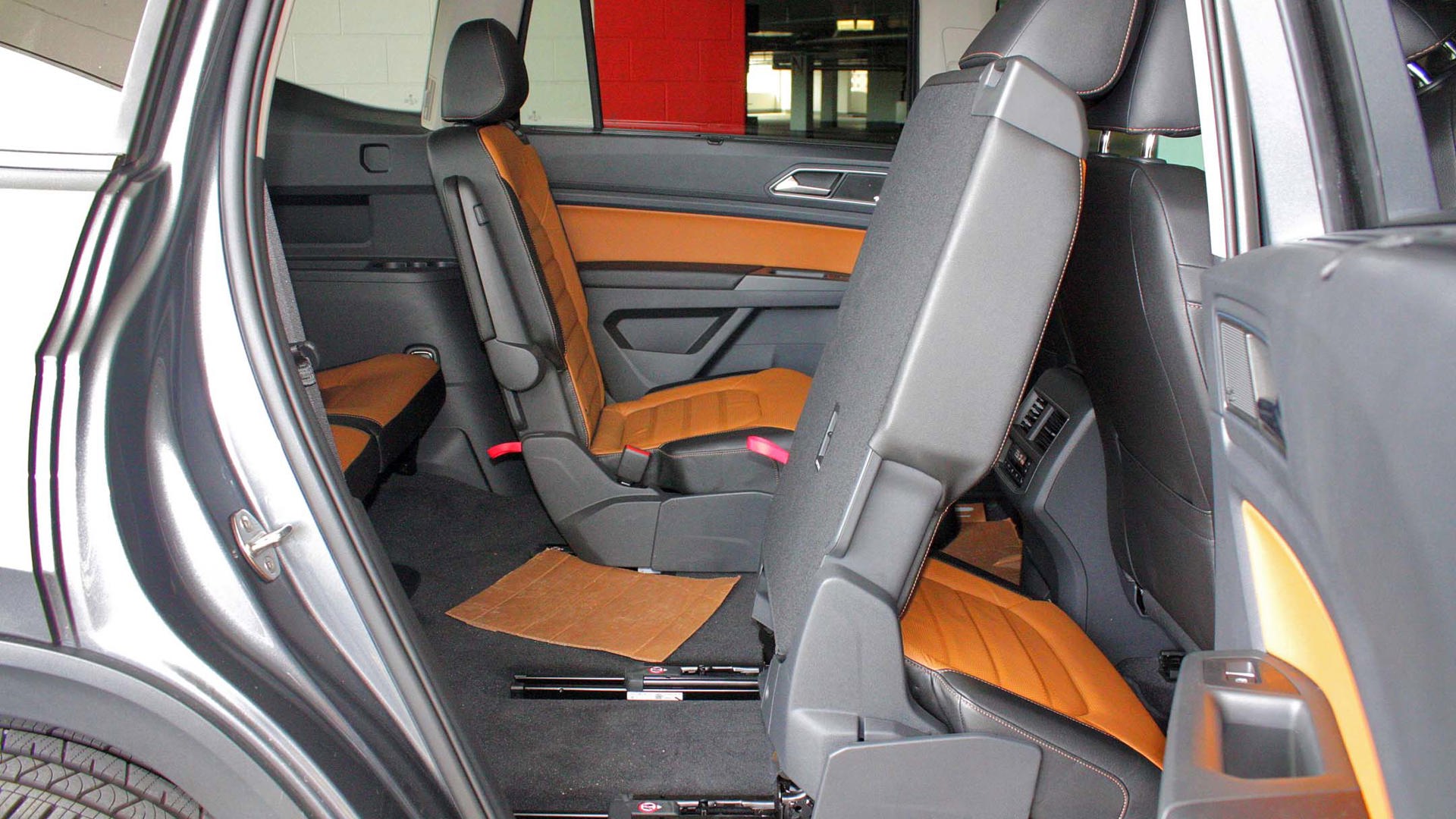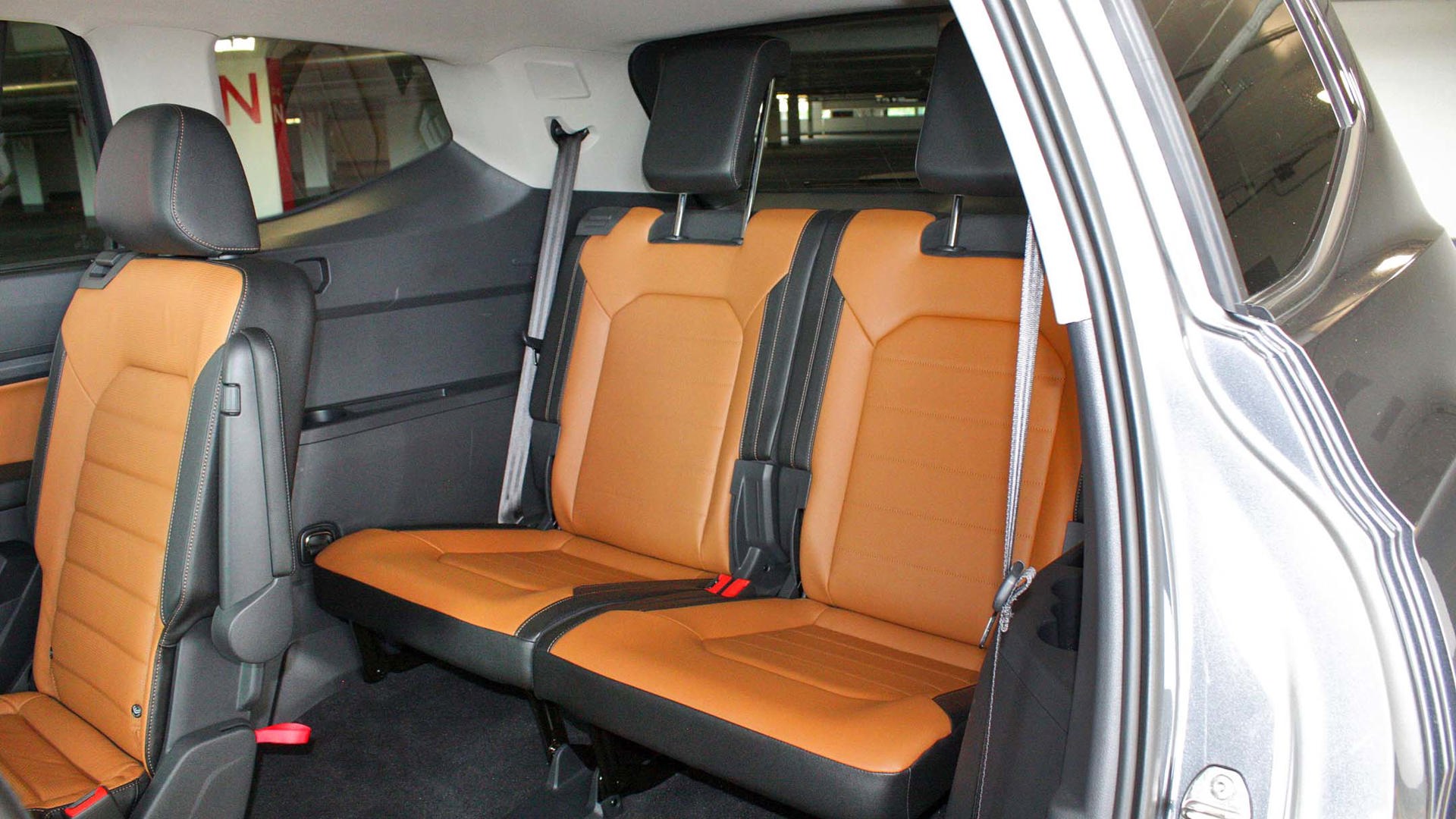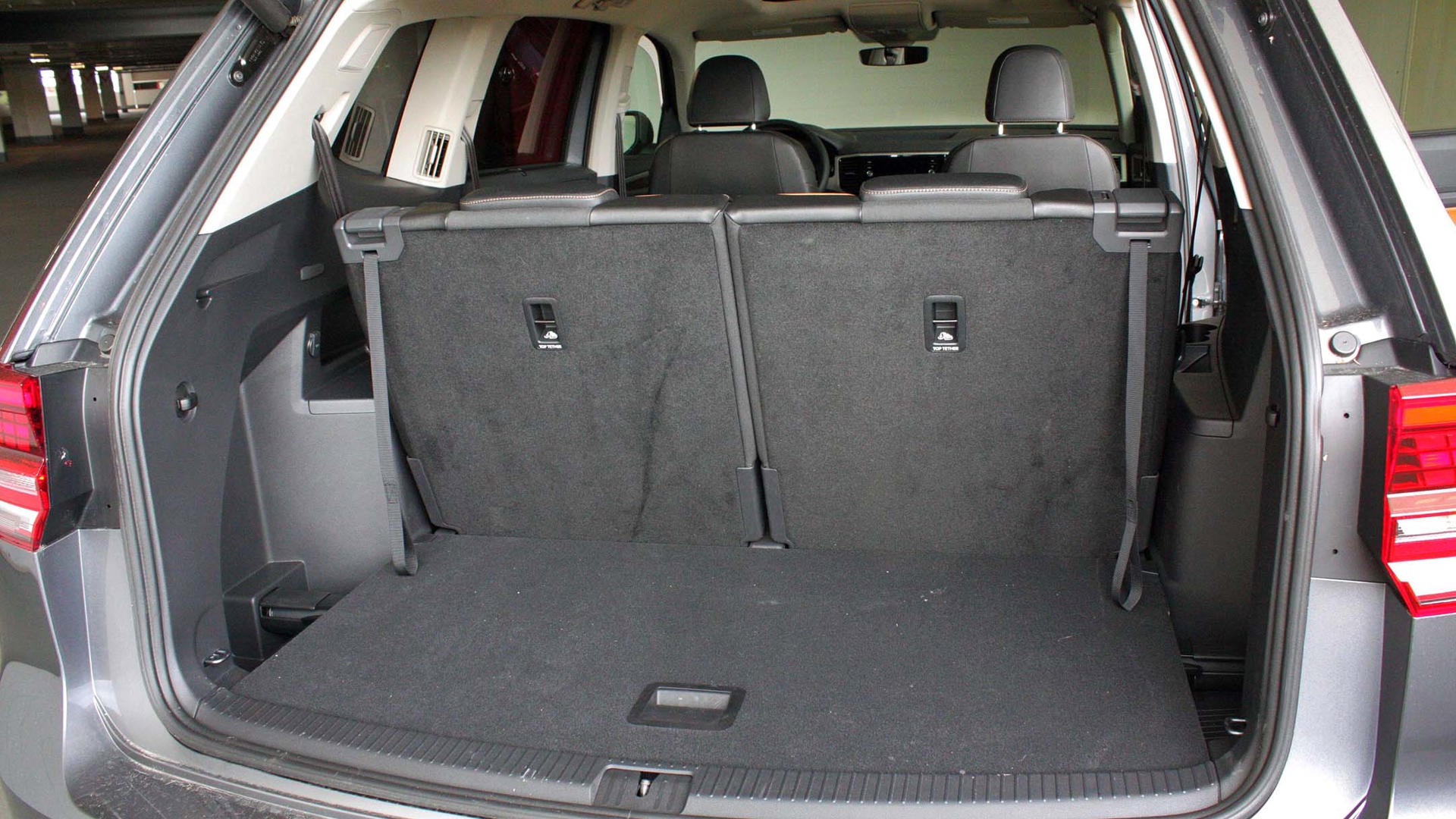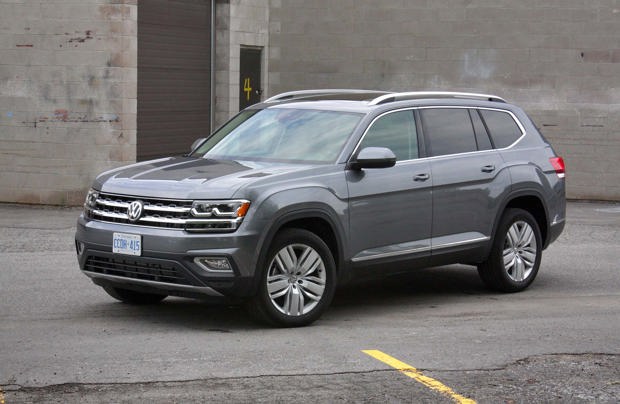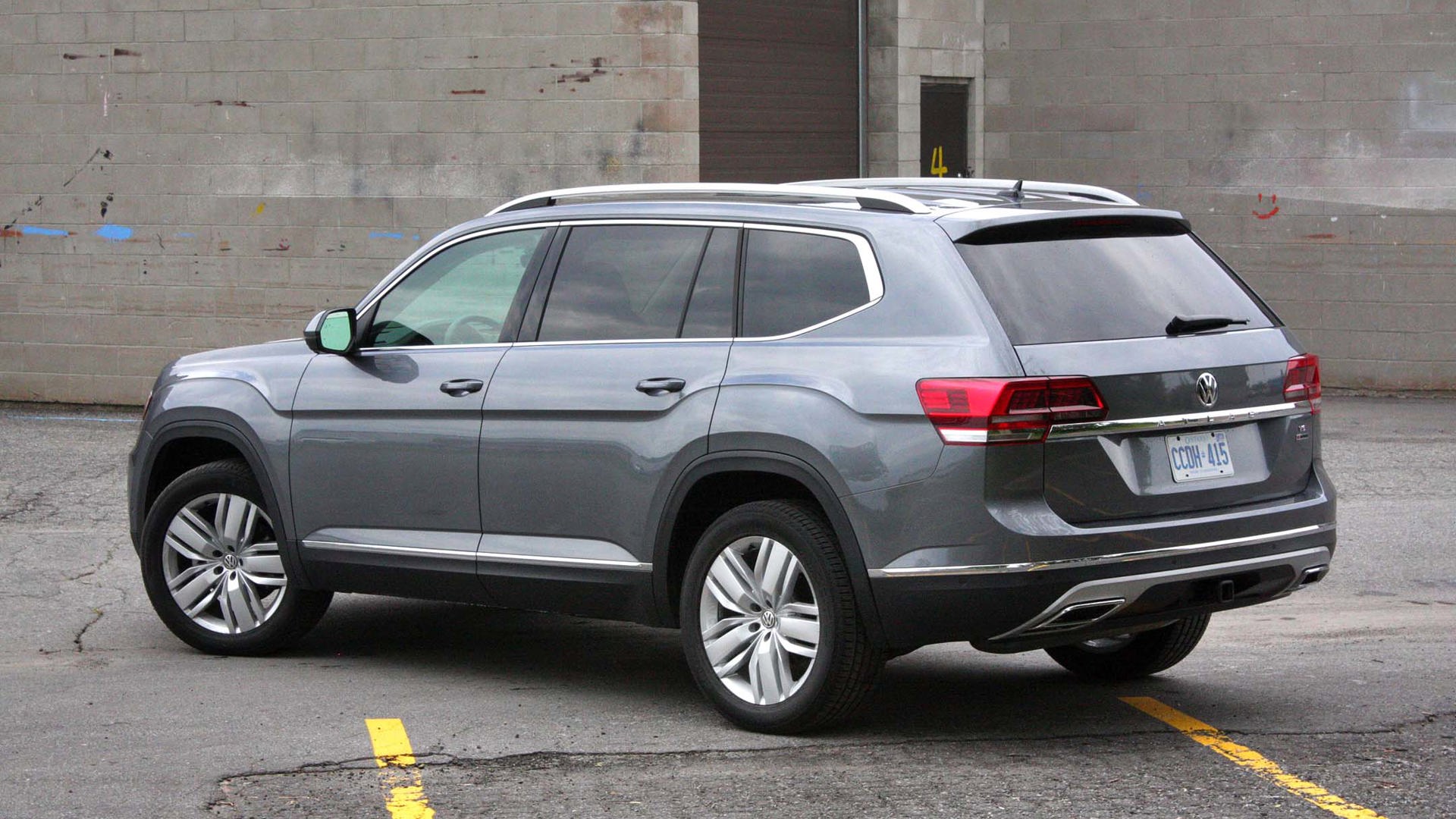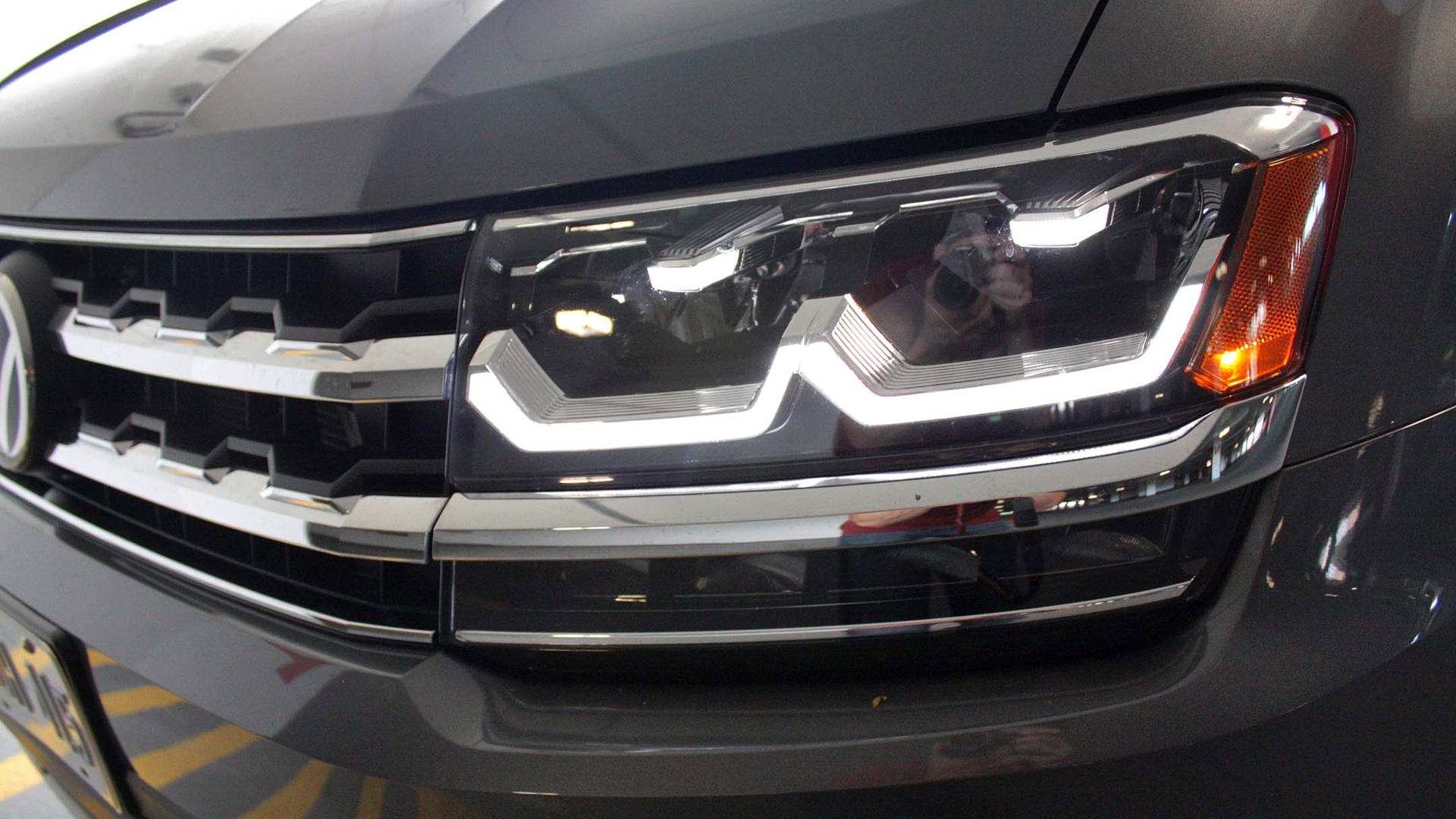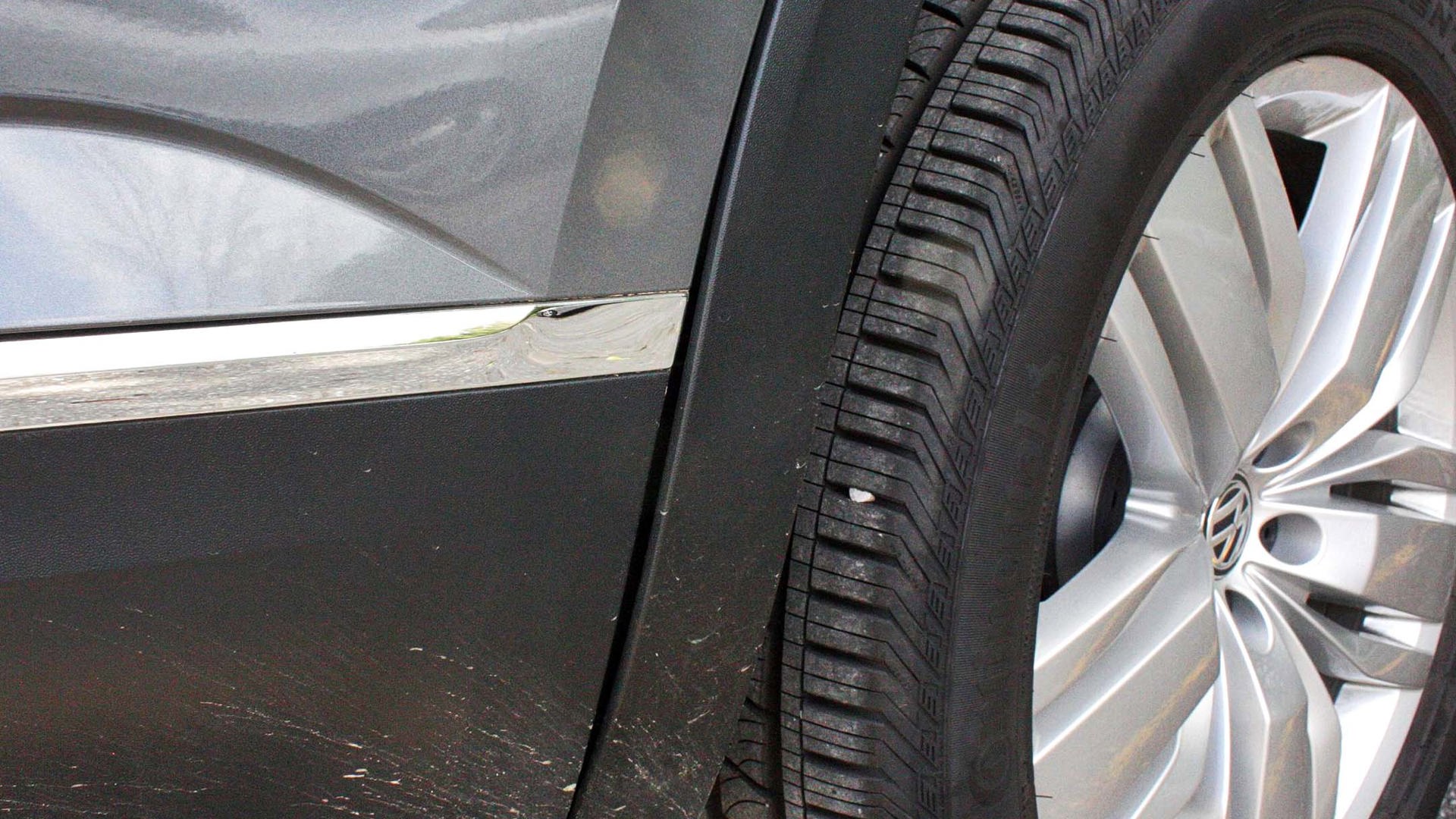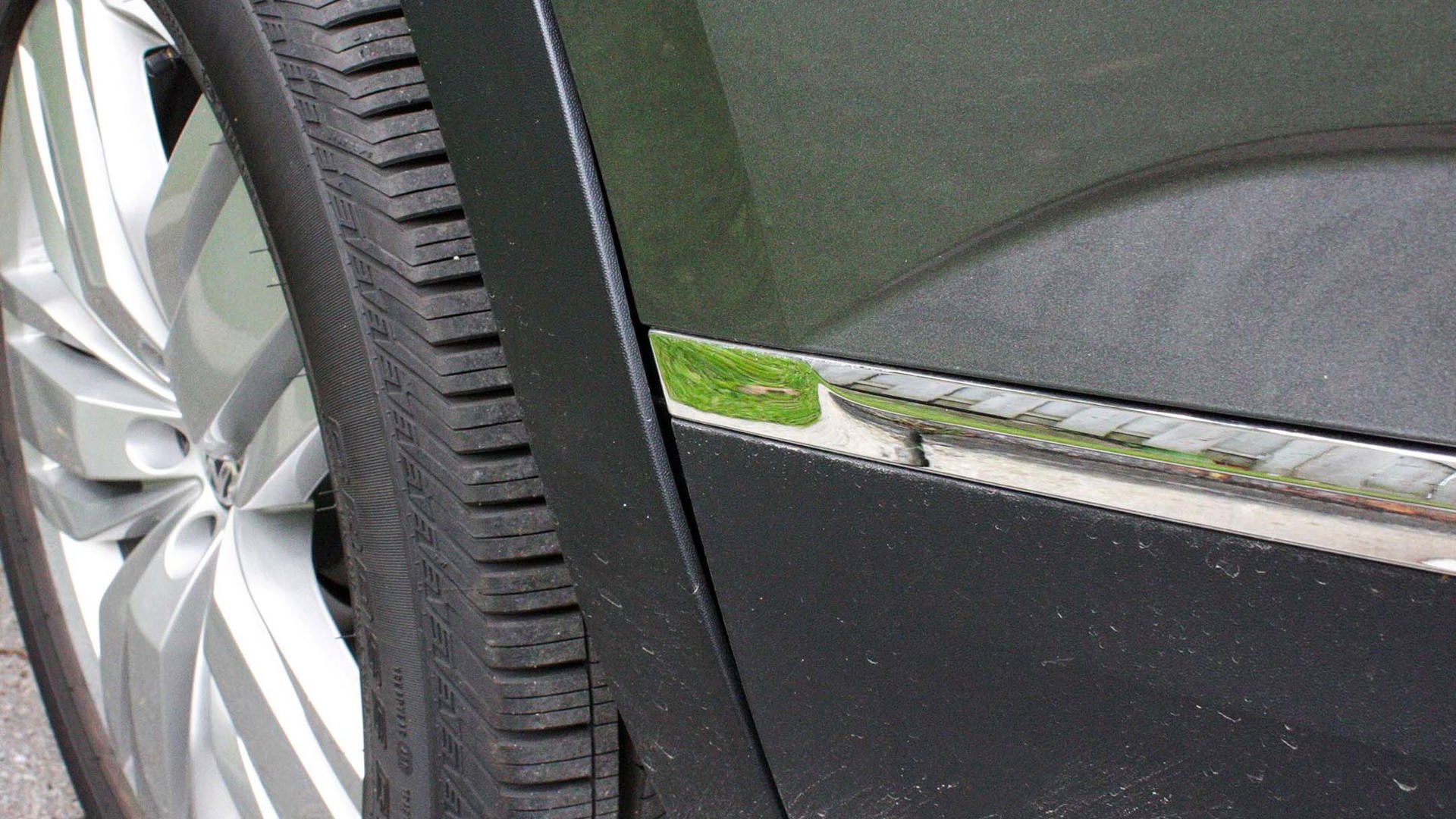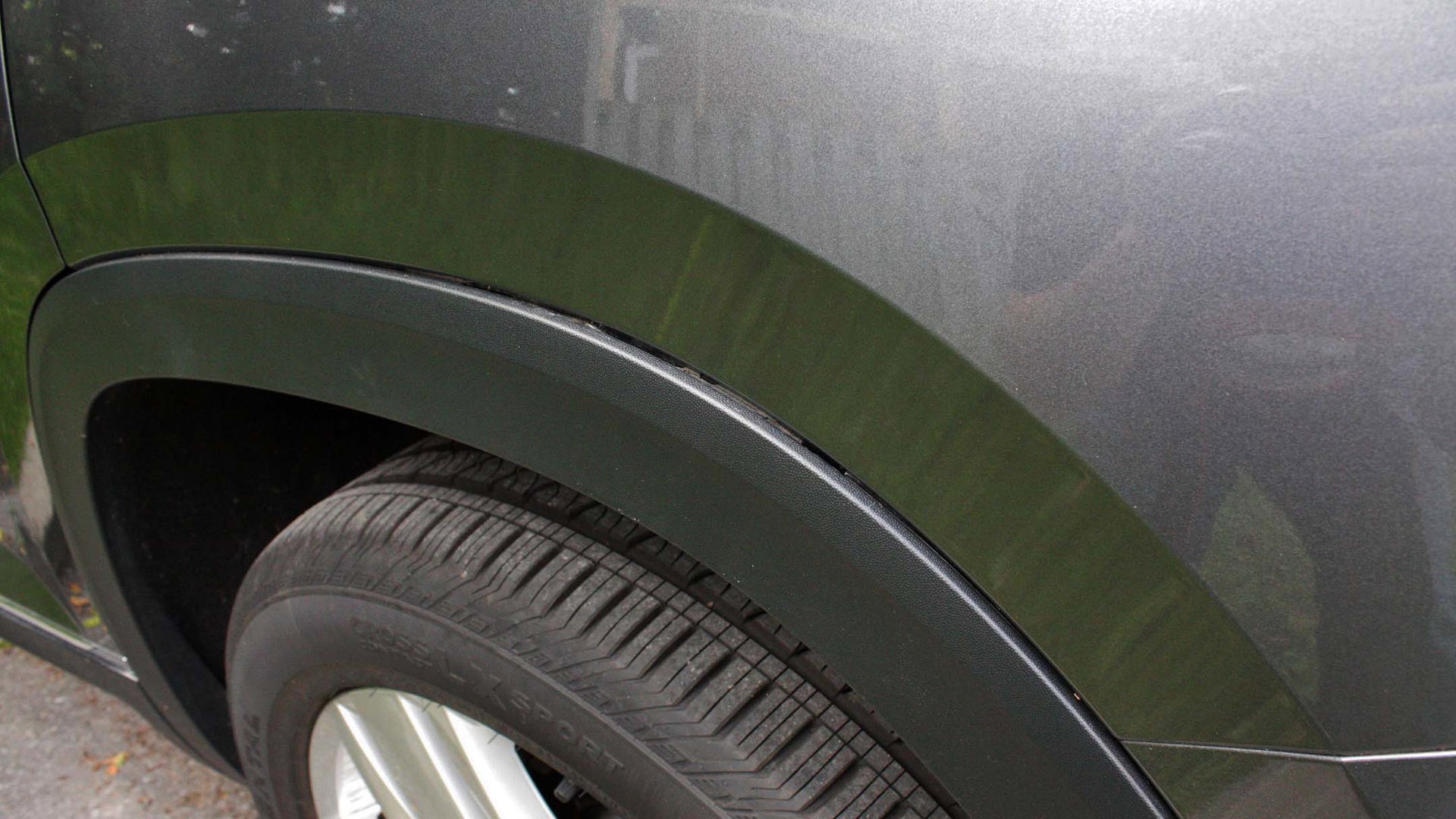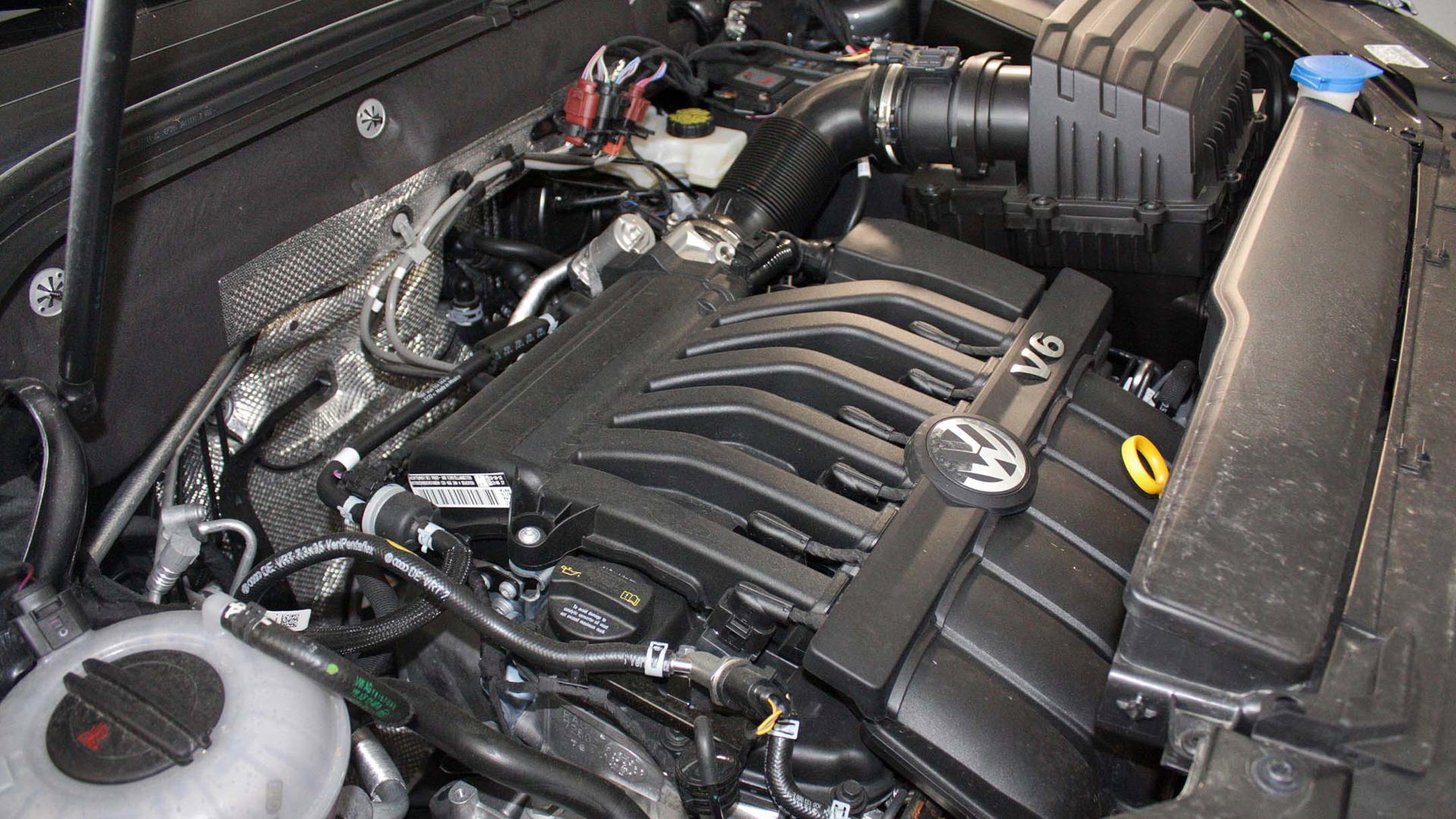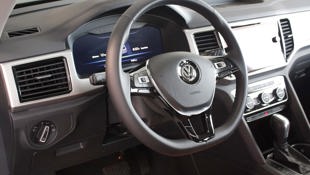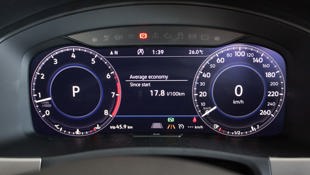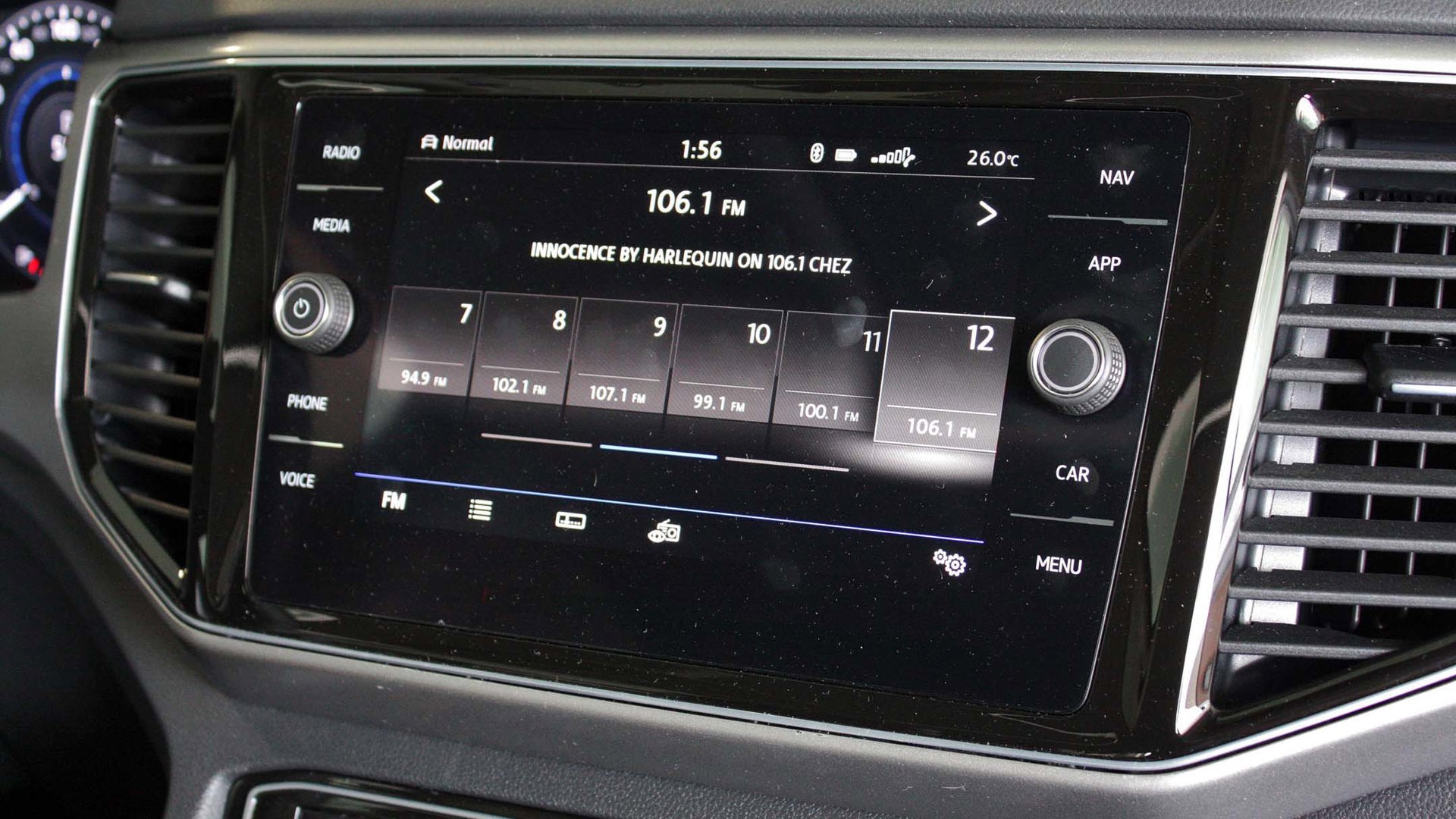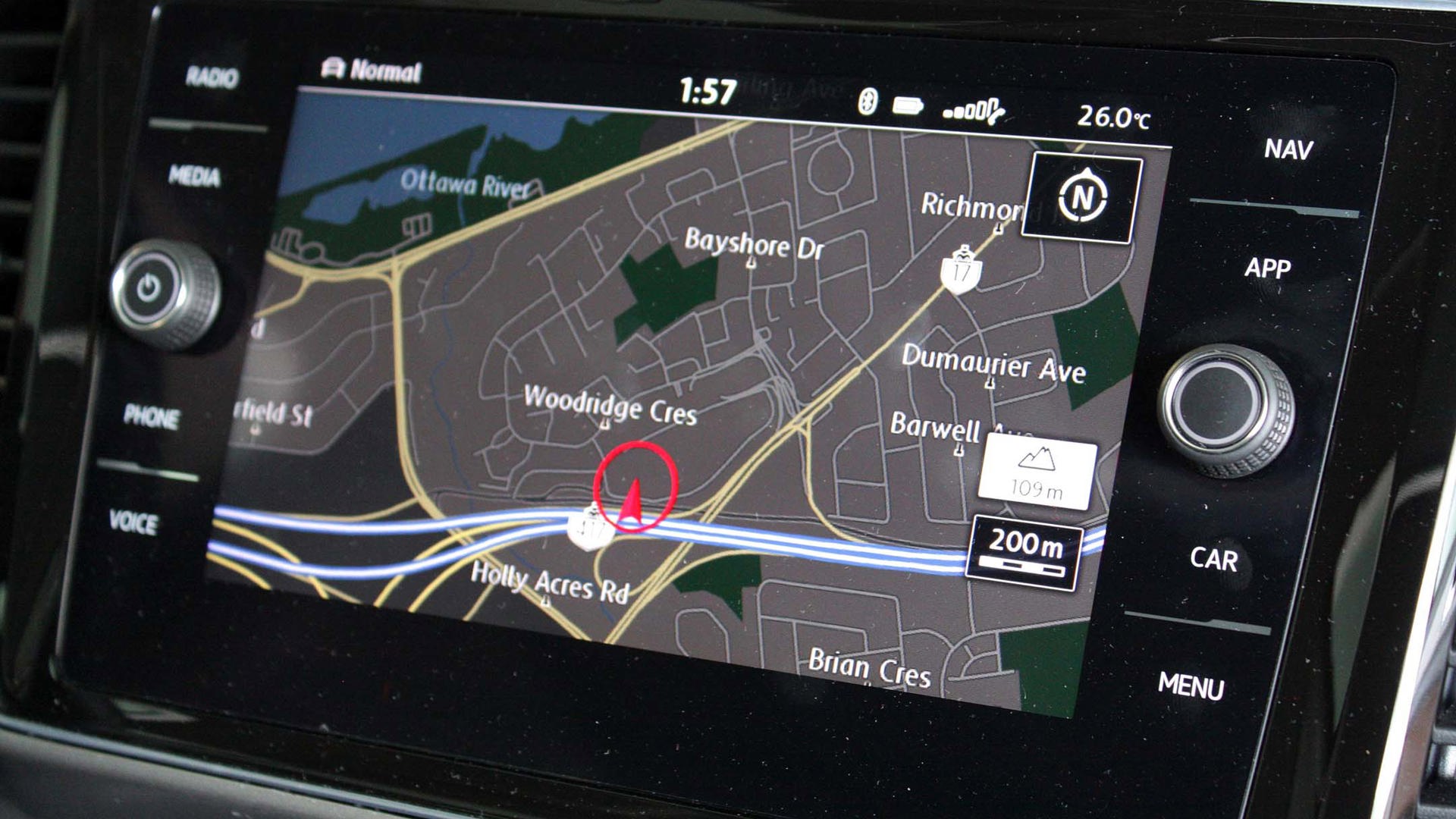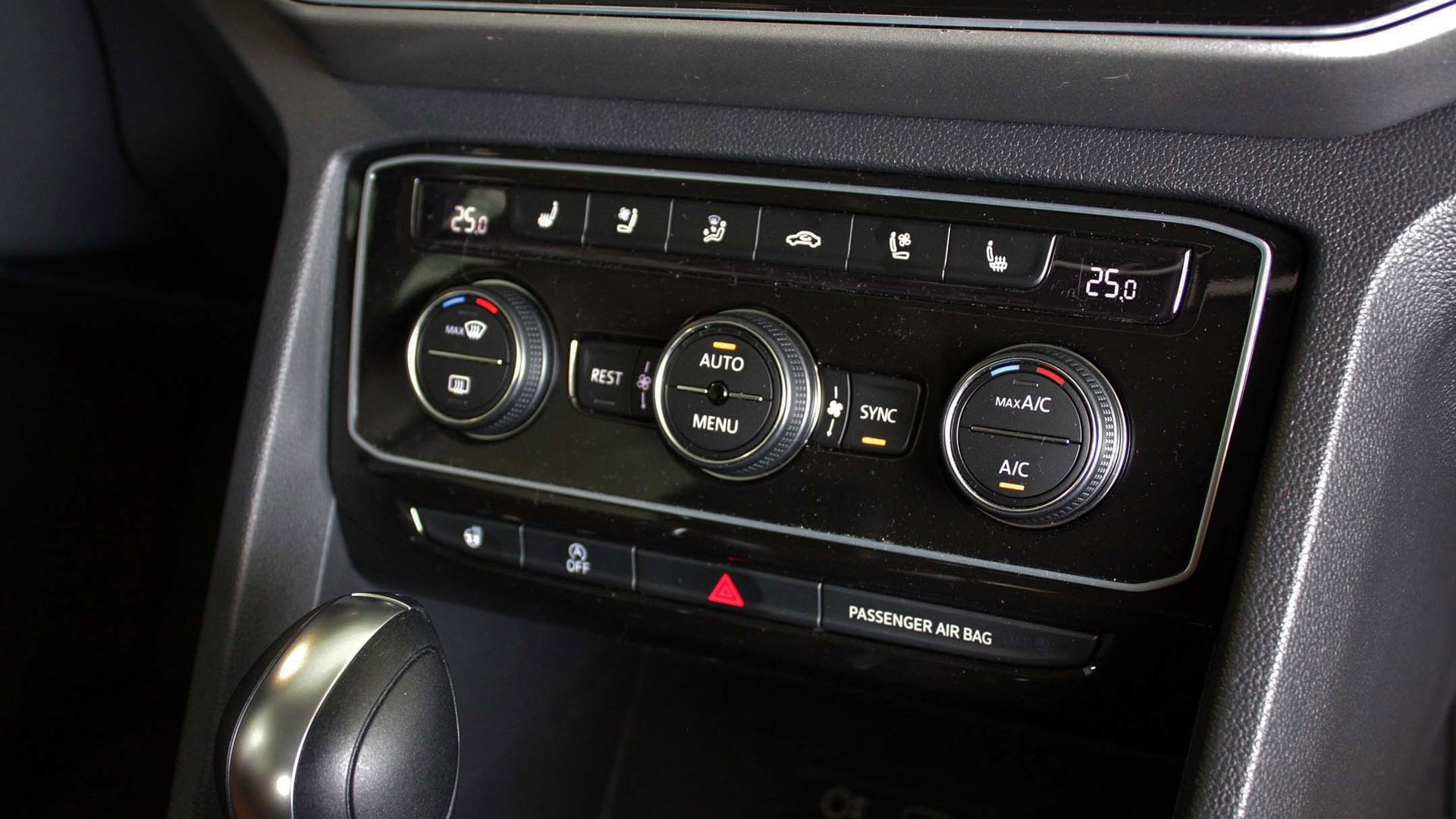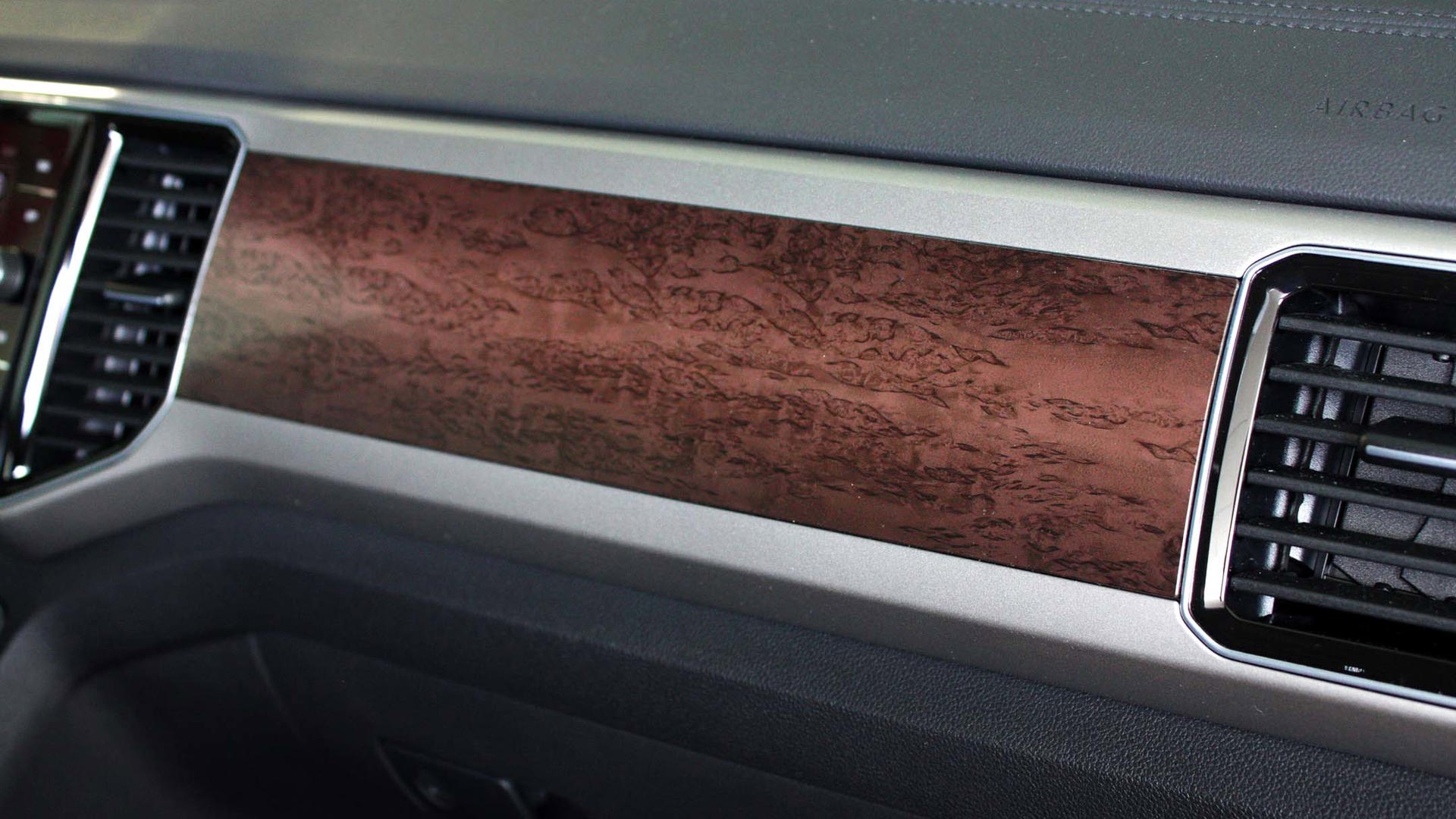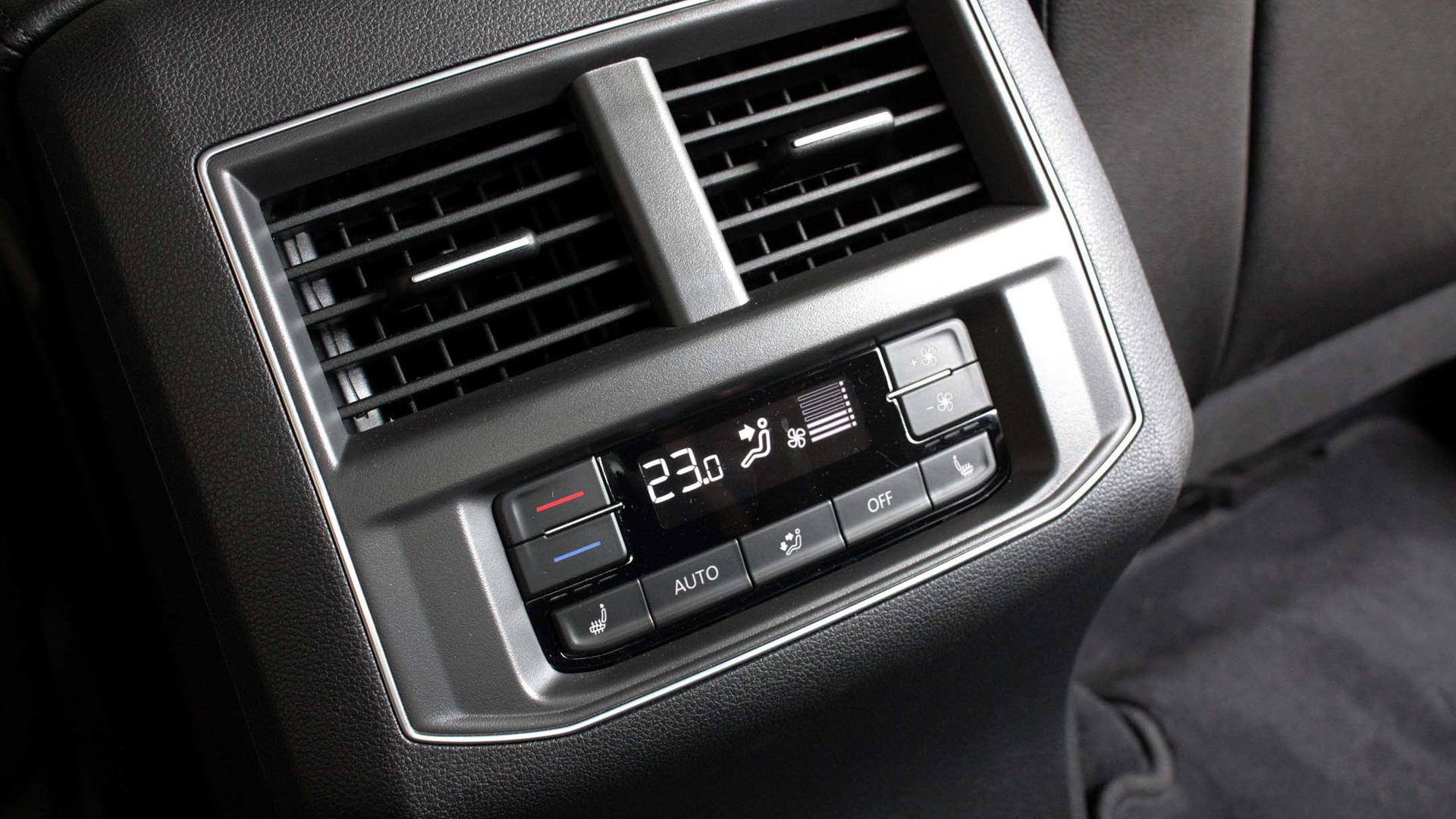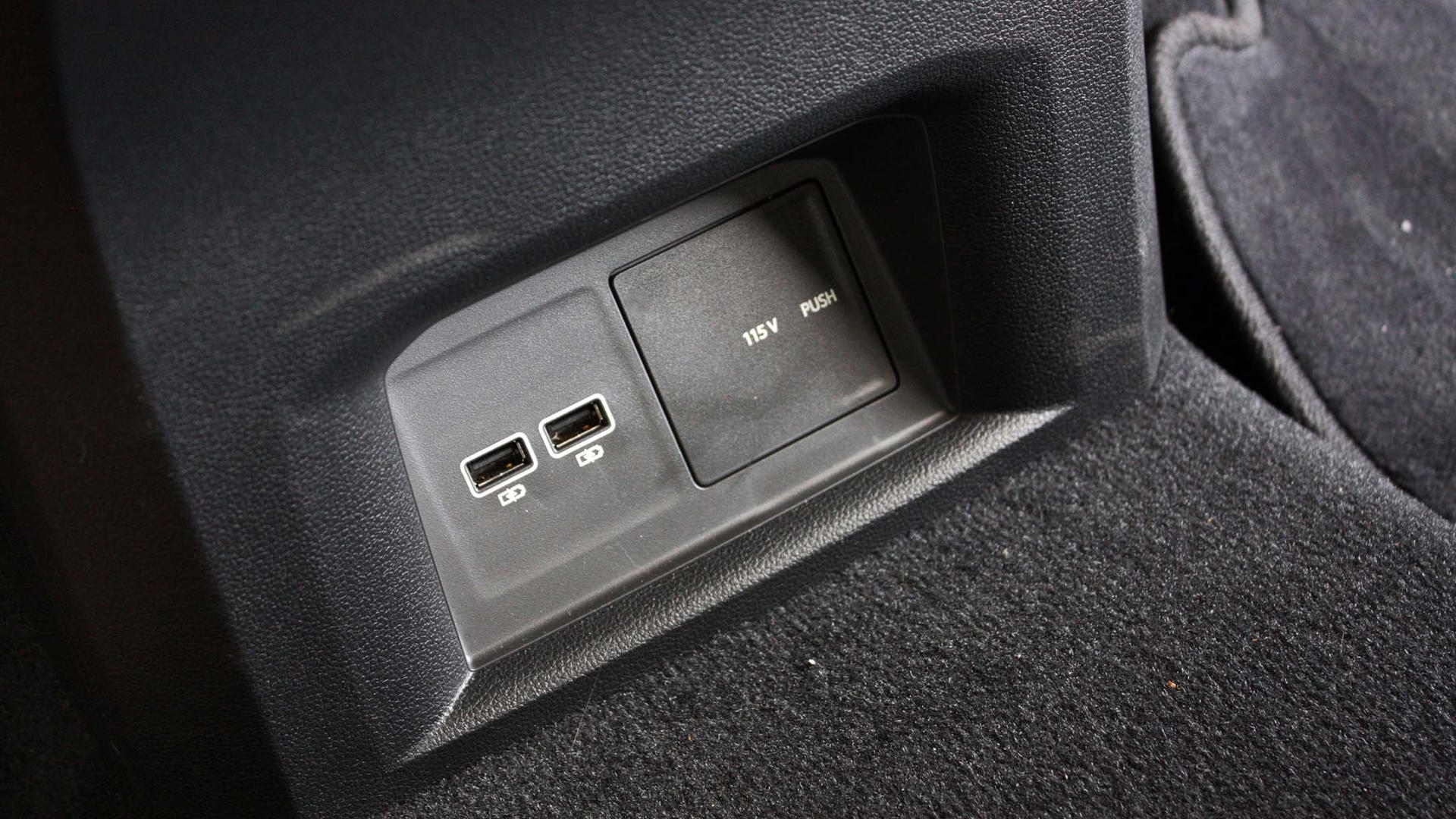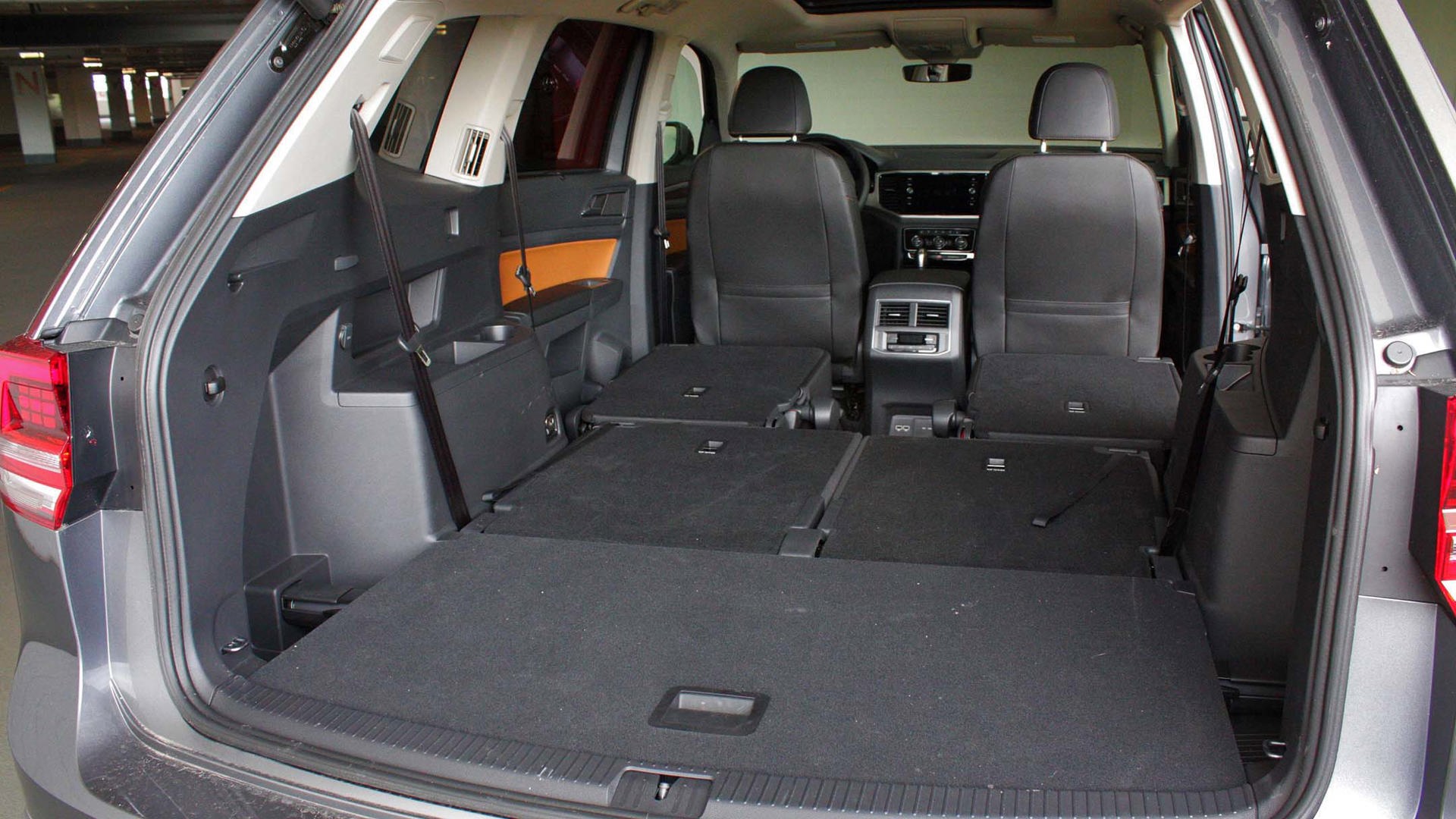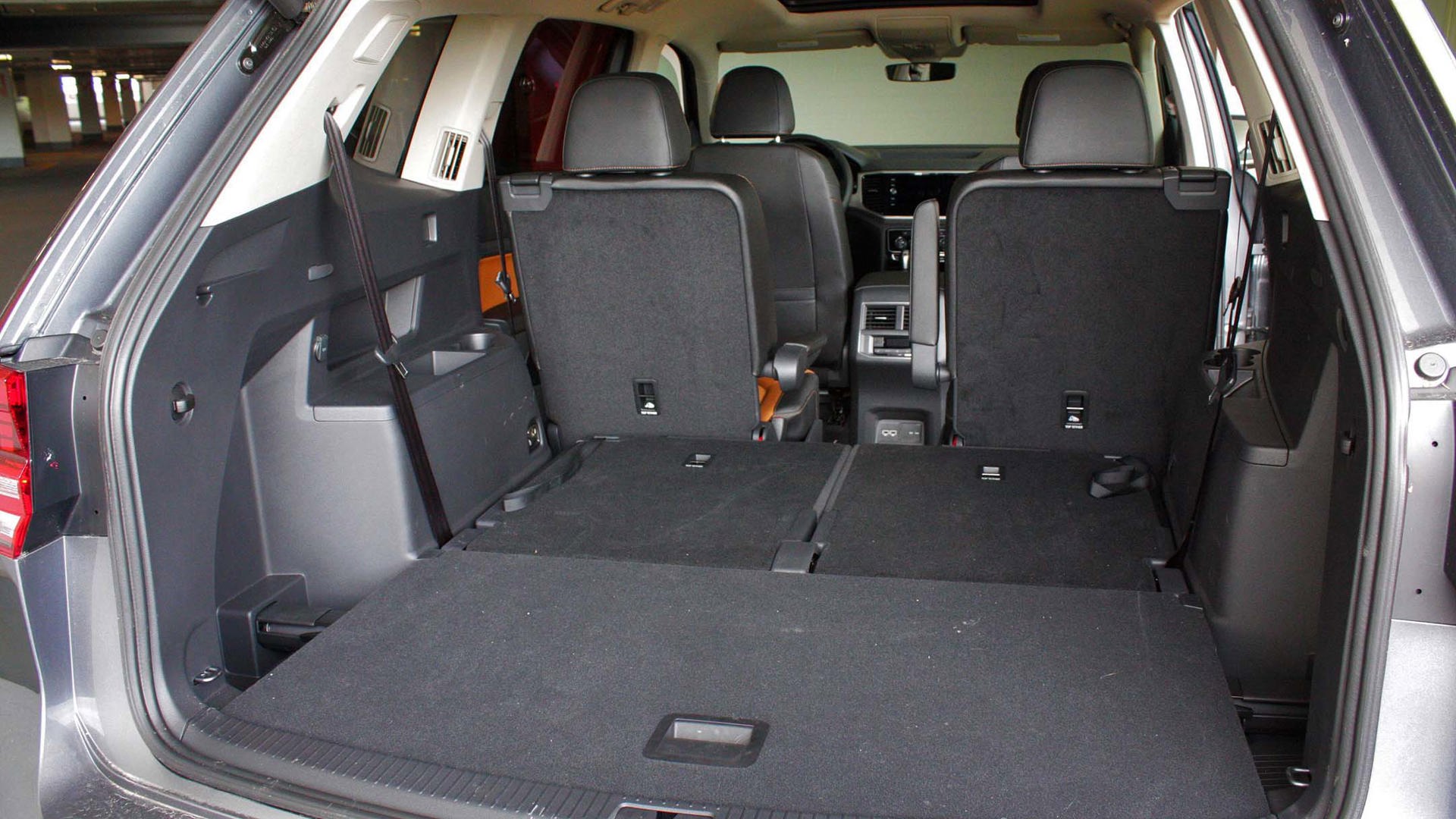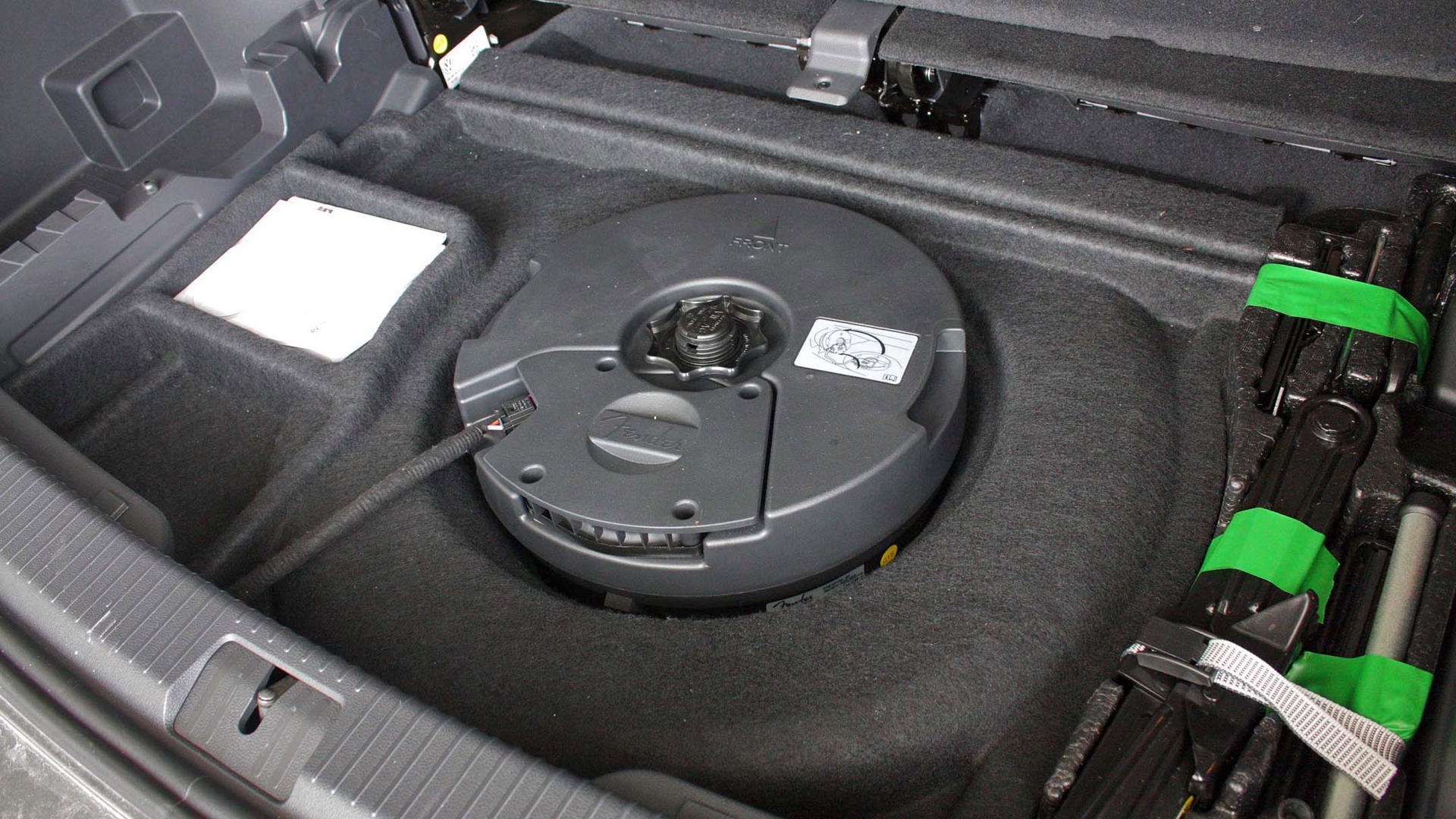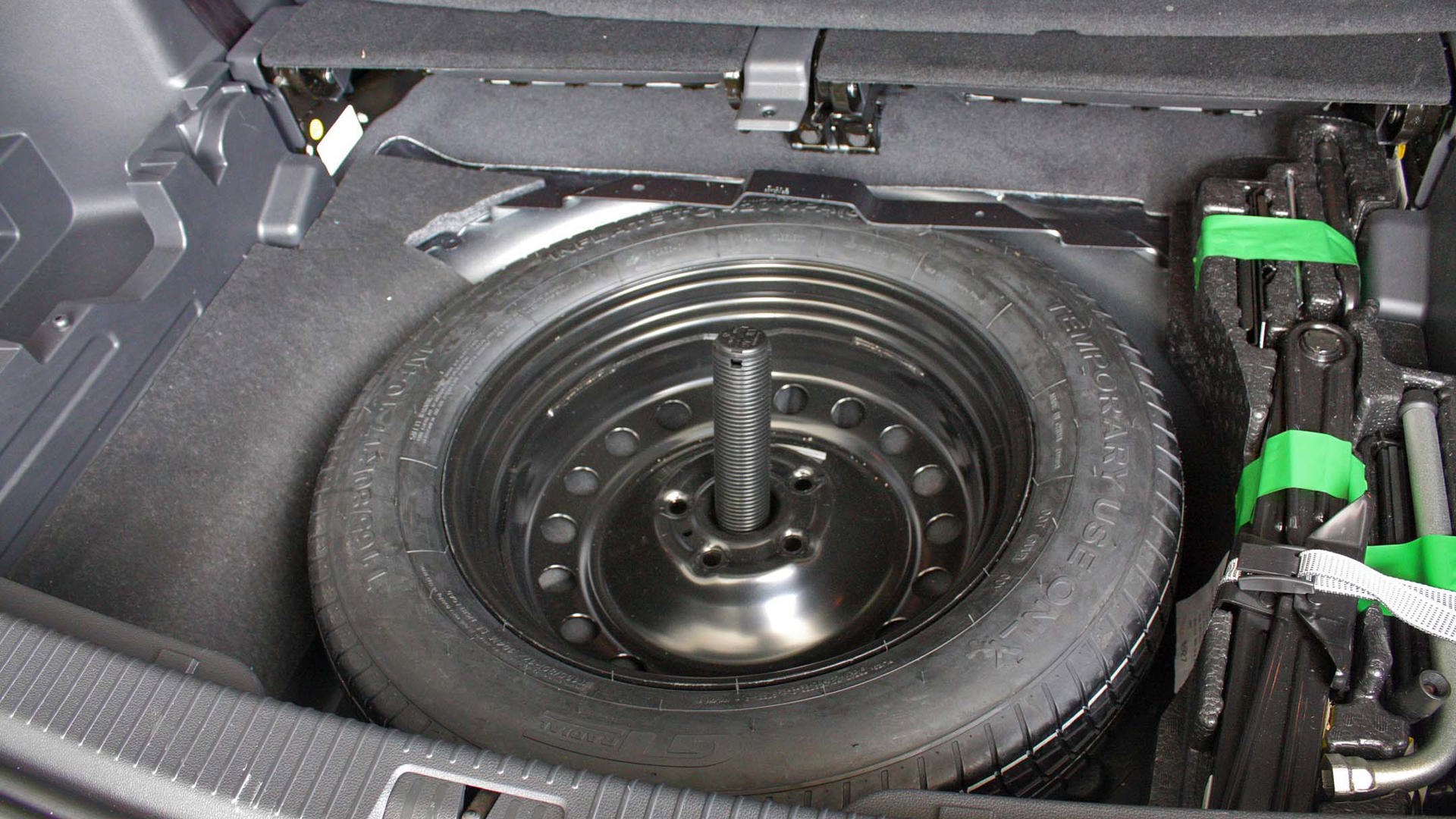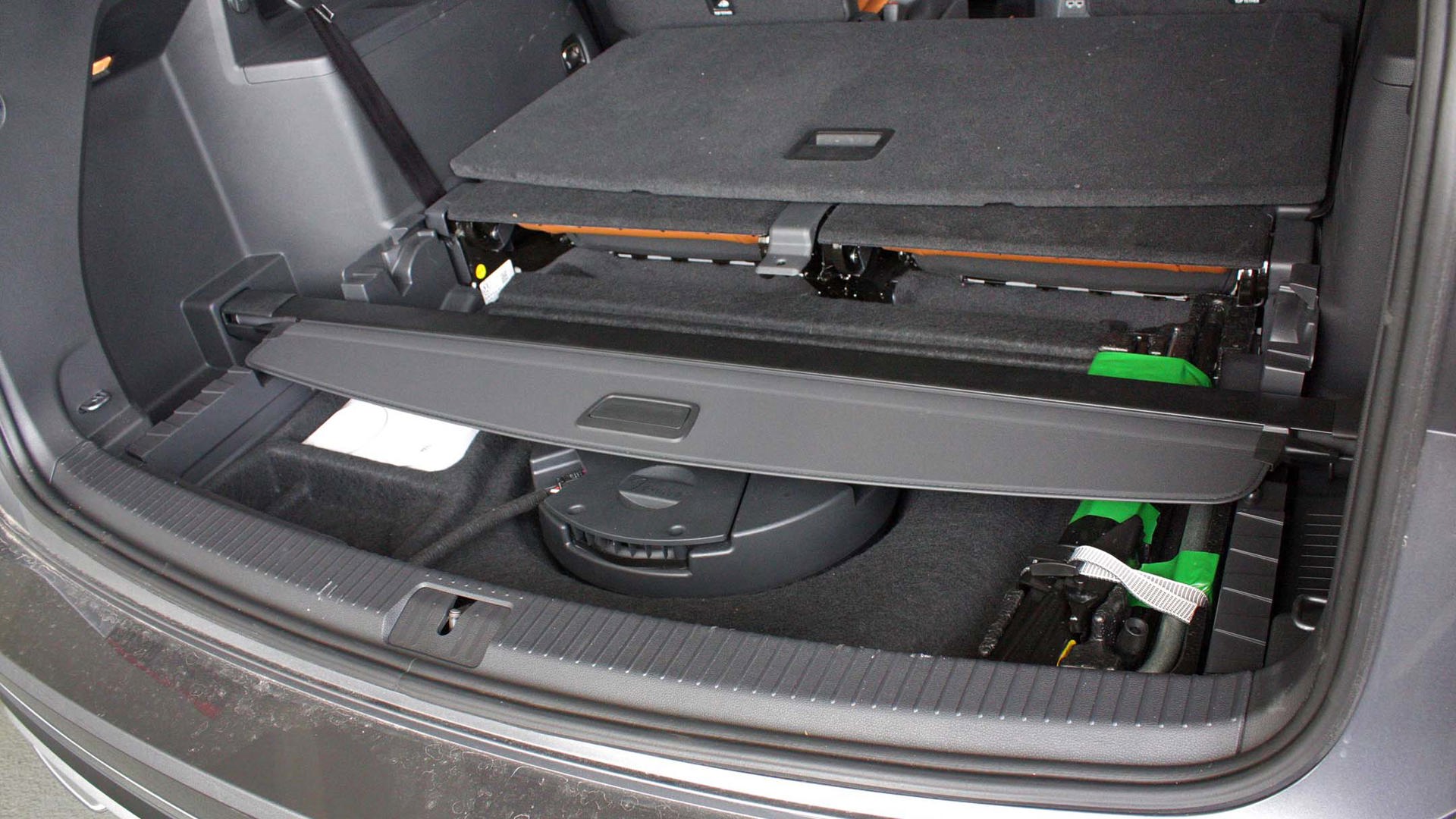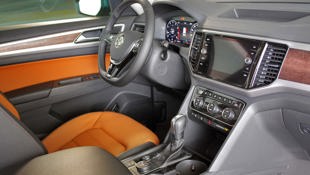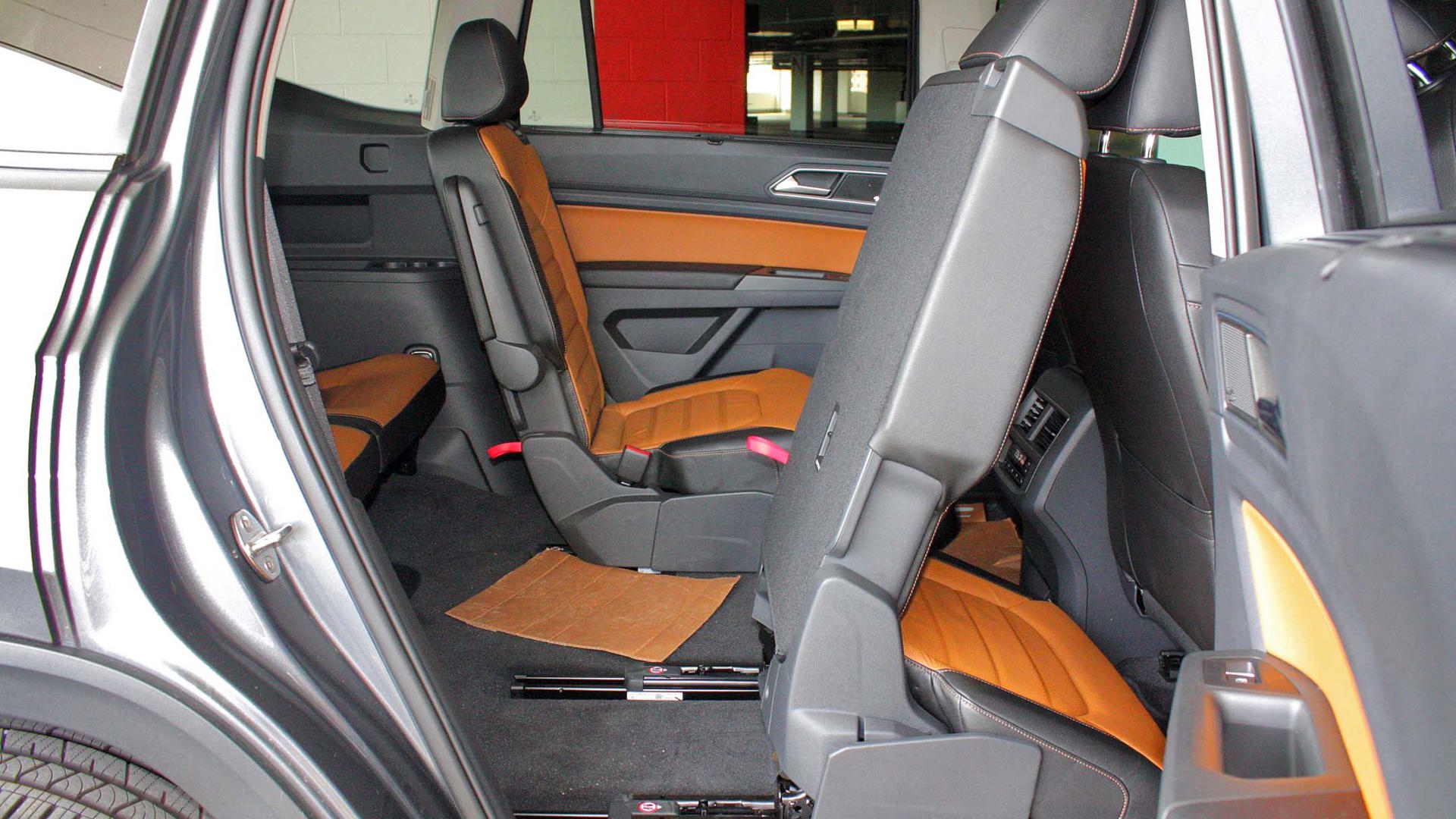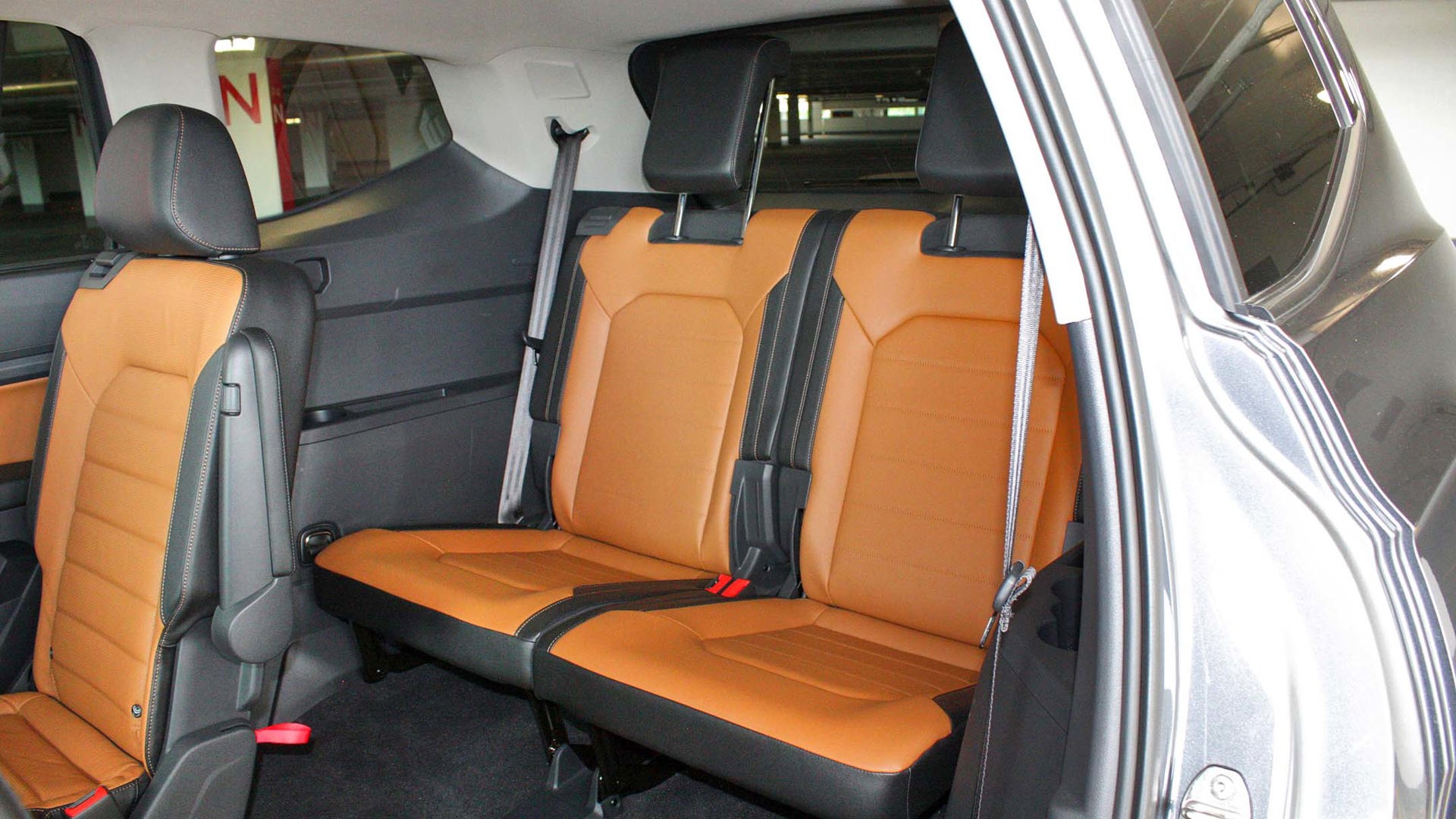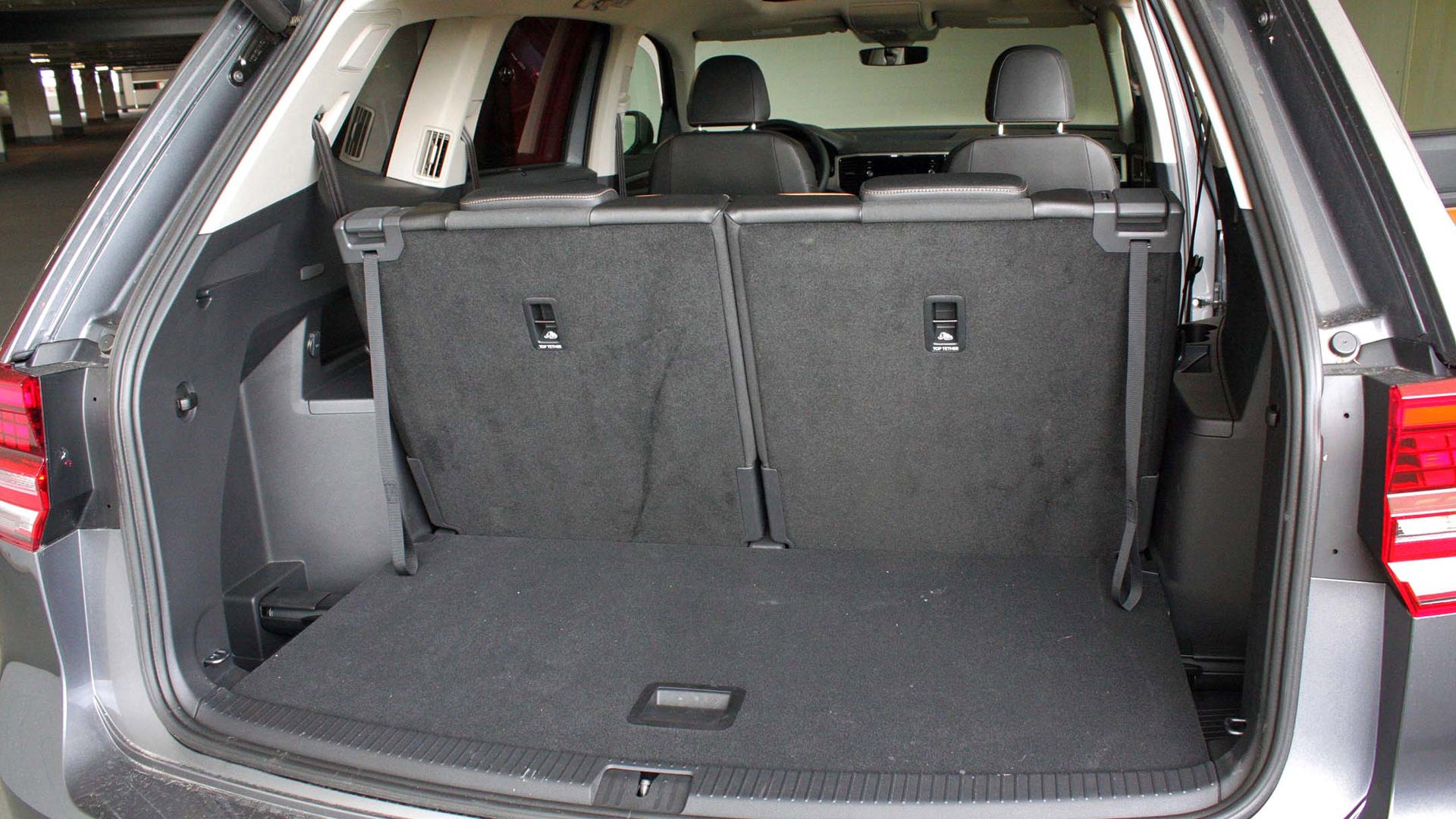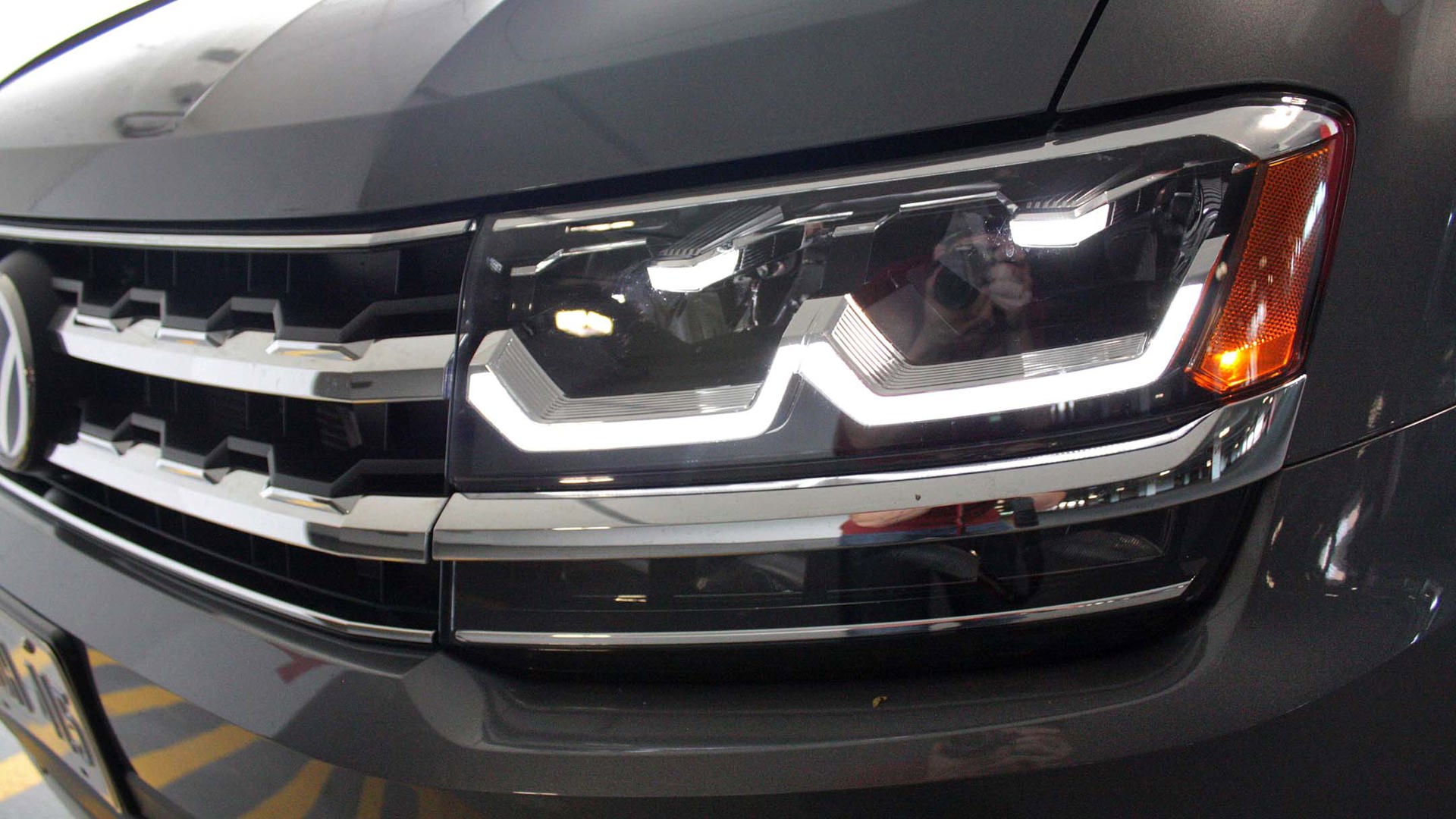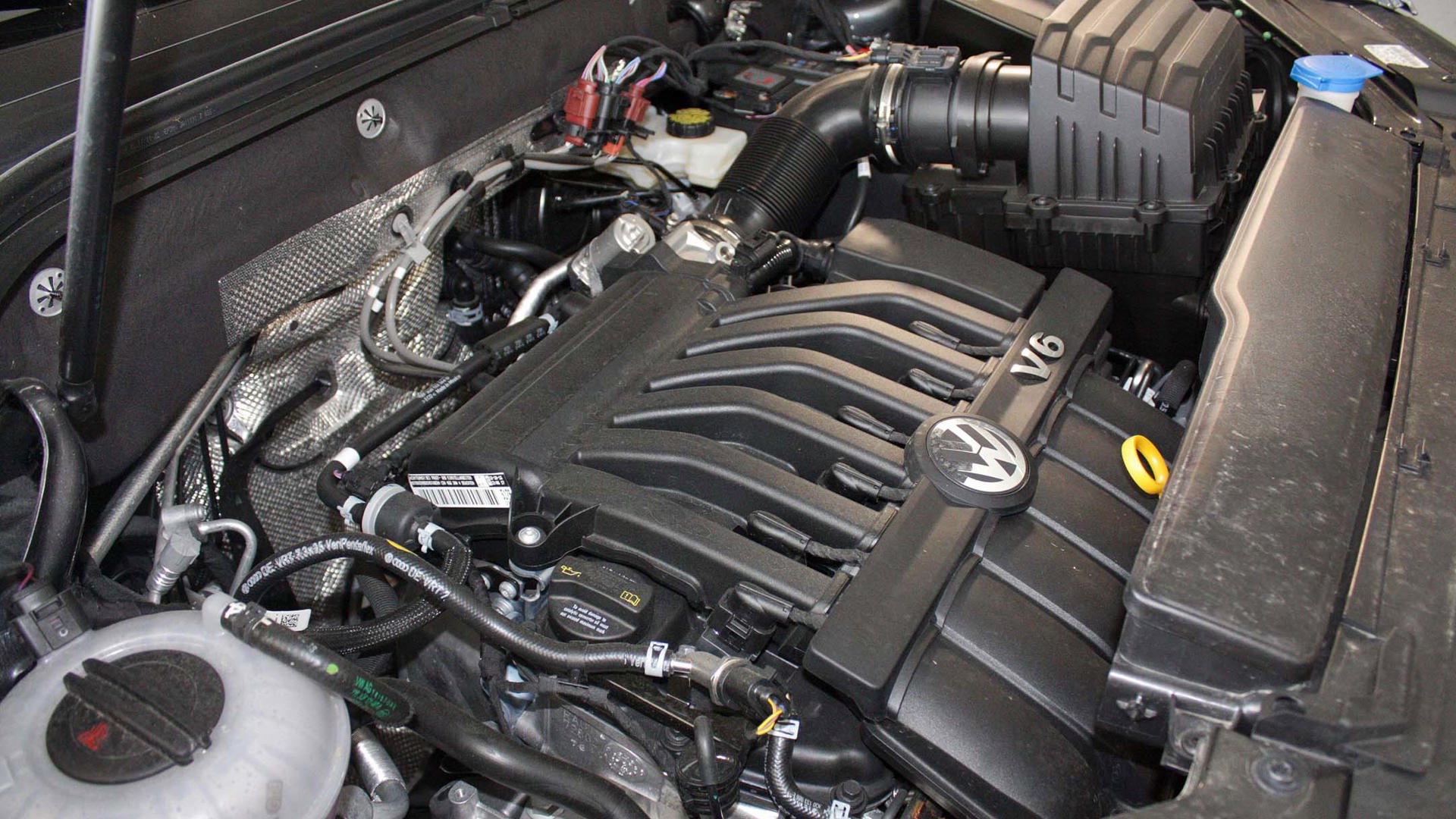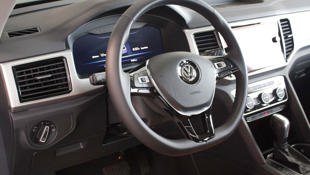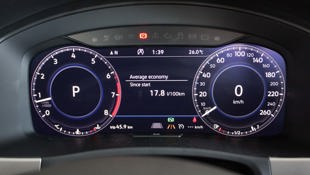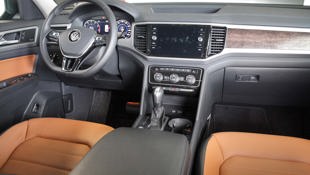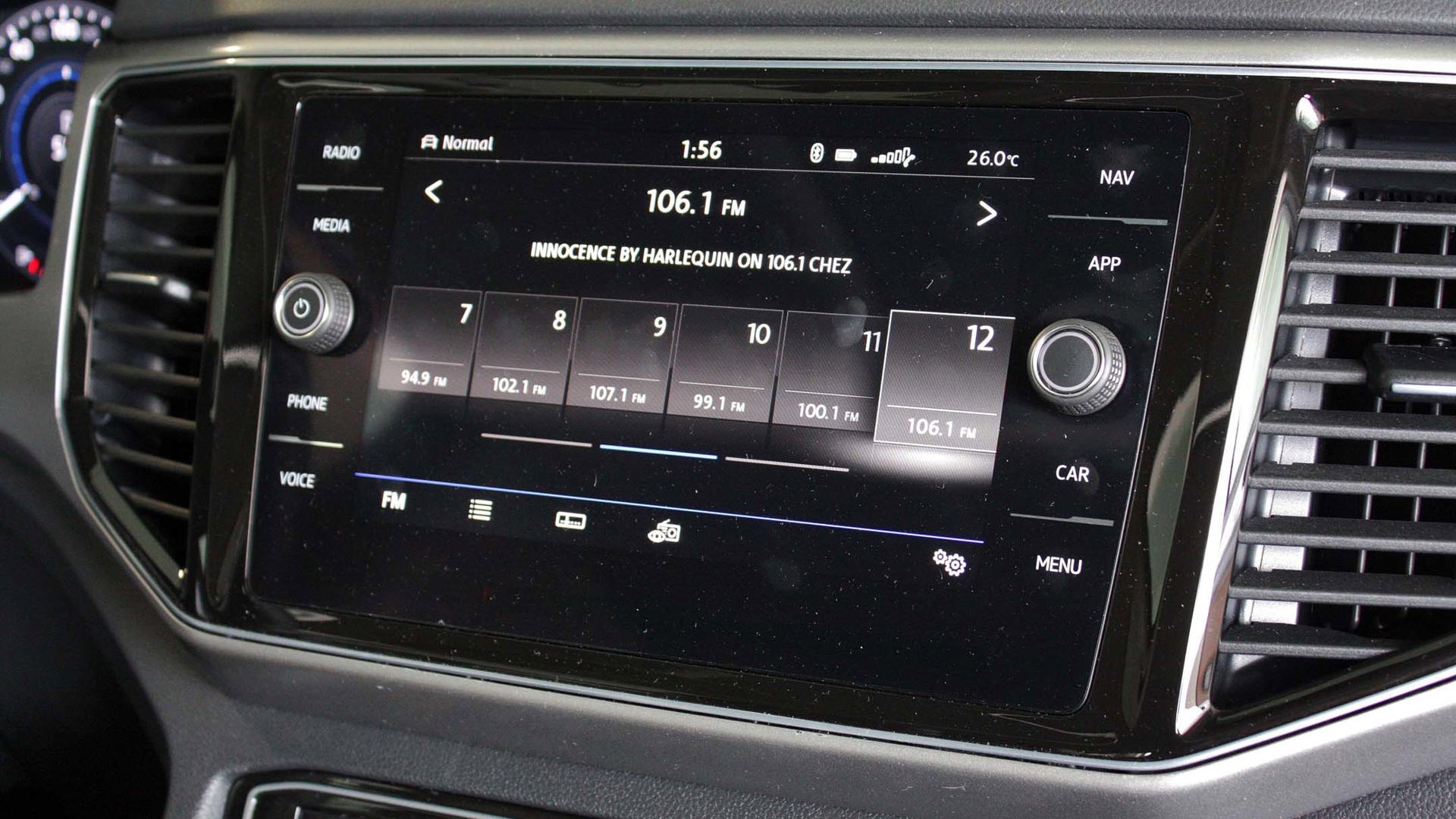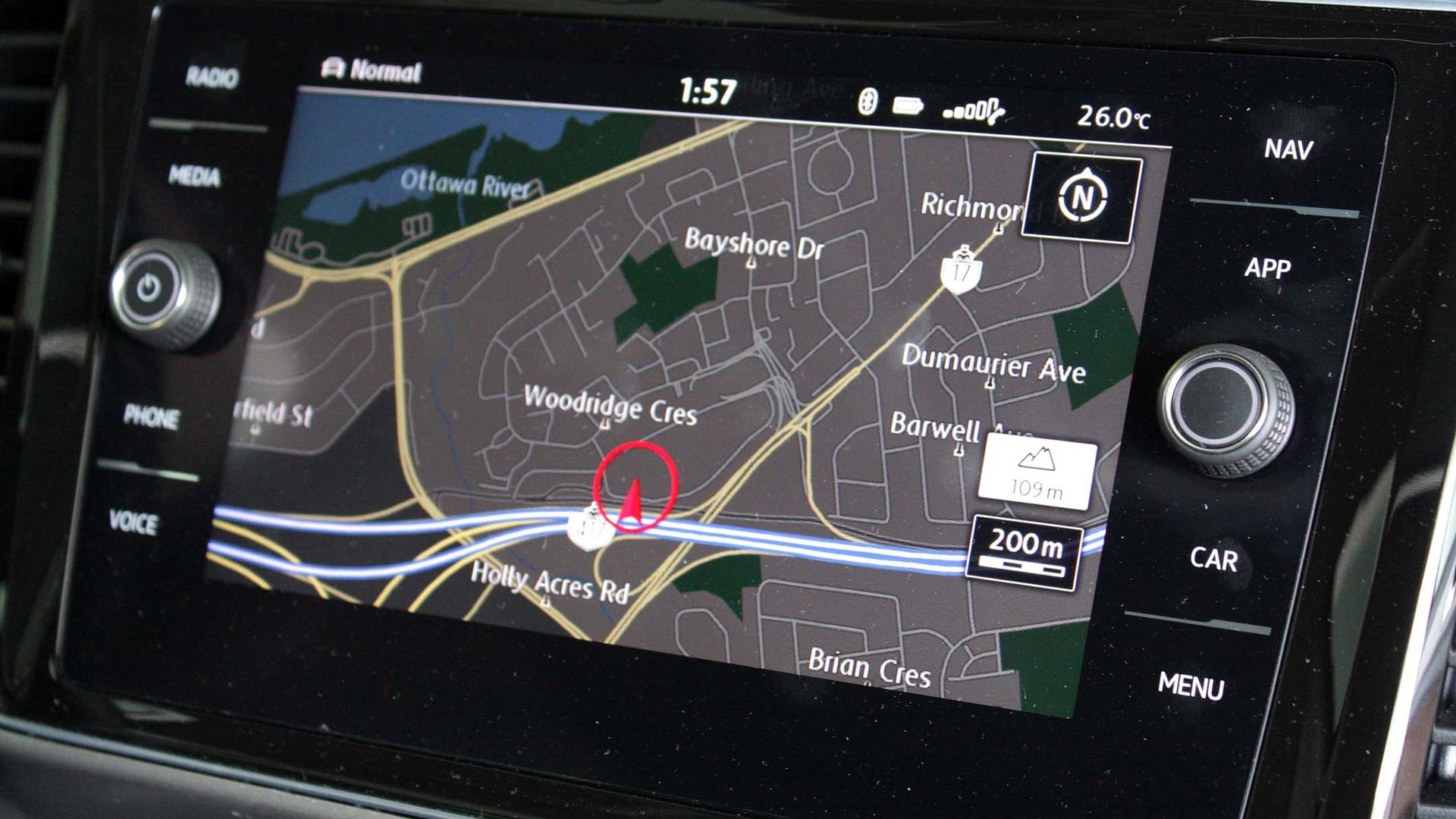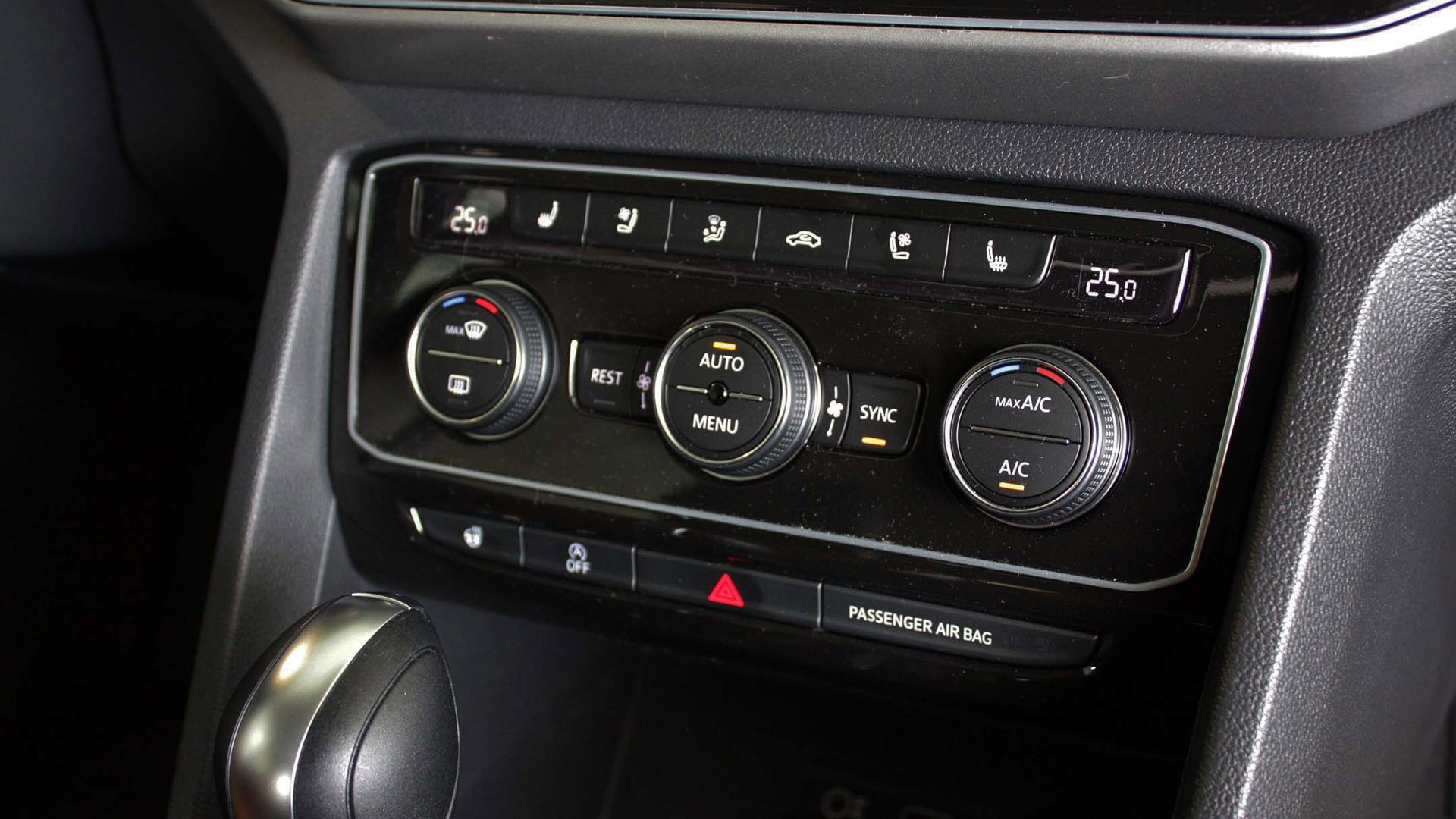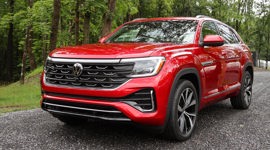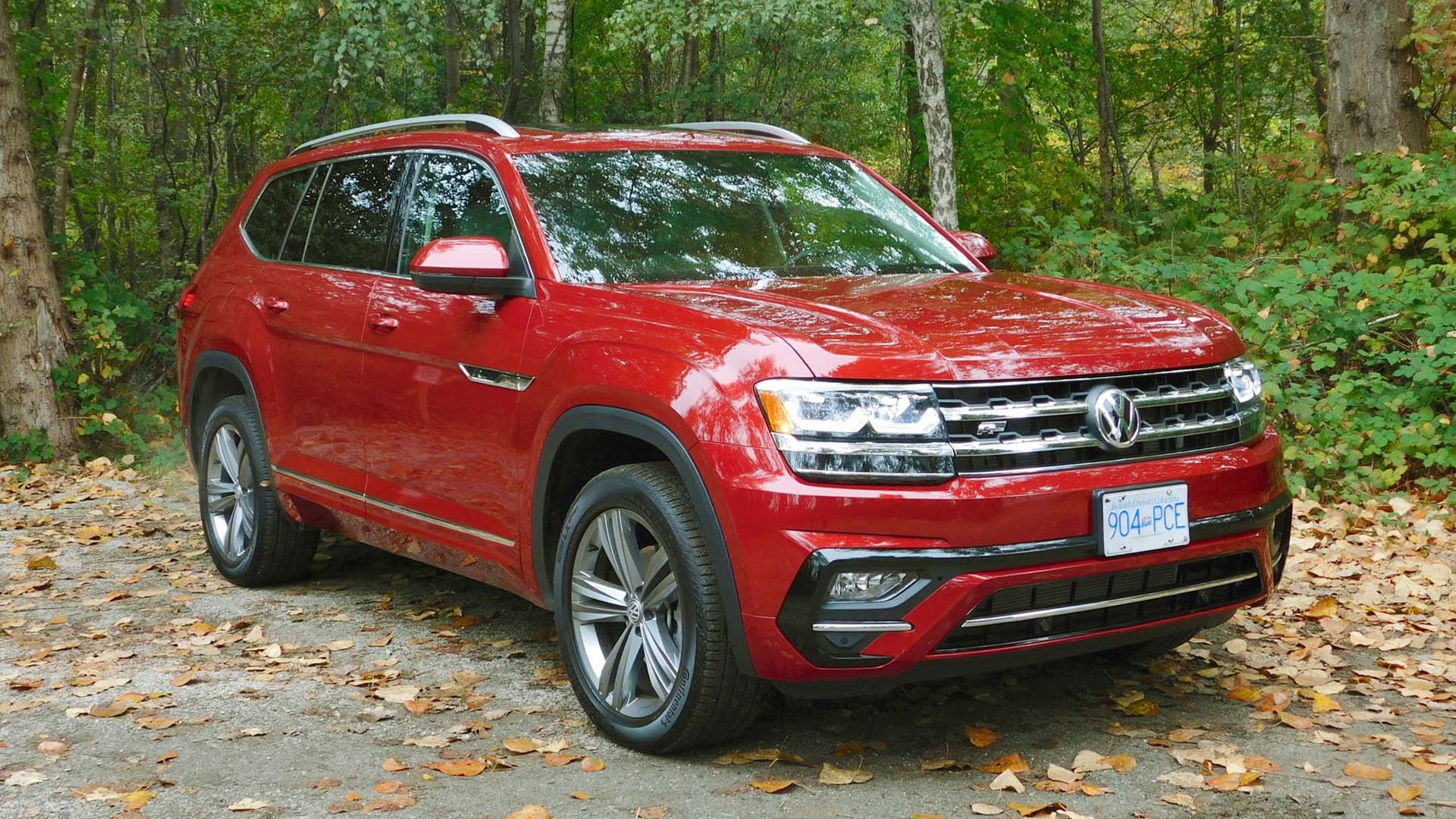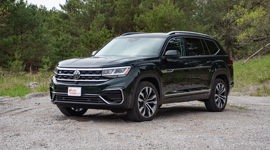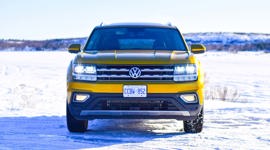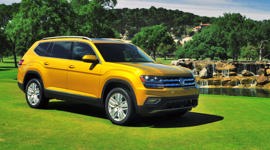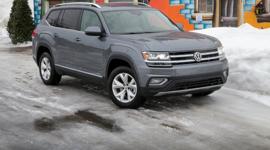 AutoTrader SCORE
AutoTrader SCORE
-
STYLING7/10
-
Safety6/10
-
PRACTICALITY9/10
-
USER-FRIENDLINESS8/10
-
FEATURES8/10
-
POWER8/10
-
COMFORT9/10
-
DRIVING FEEL7/10
-
FUEL ECONOMY7/10
-
VALUE7/10
The end of VW’s modern van experiment dovetailed nicely with the arrival in the early 2000s of its first SUV, the Touareg, a five-seat mid-size model developed alongside the first-generation versions of the Porsche Cayenne and Audi Q7.
Atlas seems an entirely appropriate name here, given how much of Volkswagen’s future is riding on its broad shoulders.
Perhaps driven by VW’s own aspirations, the car’s relationship to those luxury models, or a combination of the two factors, the Touareg was an upscale vehicle that could be optioned with a gasoline V8 or a massive turbodiesel V10 and a height-adjustable air suspension. The result was a really nice SUV for the people, so long as the people could afford a price that was easy to push north of $60,000.
But what the Touareg never offered was an interior large enough to accommodate more than five people. Enter its replacement, the 2018 Volkswagen Atlas, an all-new crossover that is the brand’s first to offer three-row seating for up to seven and points to a more affordable approach to people-moving.
Volkswagen is no novice at building vehicles made to move lots of people. The company recently announced plans to revive the spirit of its iconic Microbus with a production version of the retro-styled ID Buzz electric van concept it showed at January’s Detroit auto show.
And back in the 1990s, Volkswagen attempted to cash in on the minivan craze (better late than never) with the Eurovan, a boxy but spacious vehicle that was ultimately too Euro (read: underpowered and too expensive) to gain traction in a segment dominated by Grand Caravans and Honda Odysseys.
The Atlas is part of Volkswagen’s plan to add seven(!) new SUVs and crossovers to its global lineup by the end of 2018, and eventually offer a total of 19(!!) utility vehicles in markets around the world. We know at least two, and probably three, will be available here: the Atlas; an all-new, larger Tiguan that will also offer three rows of seating; and the T-Roc, a compact two-door crossover that seems a sure thing for the US market and a strong possibility for Canada, too.
Auto-industry product-development cycles are long, so it’s entirely possible both the Atlas and upcoming Tiguan version 2.0 were well into their design phases when VW’s diesel scandal broke in late 2015. But to an industry outsider, it would be easy to assume this renewed focus on SUVs is something of a Hail Mary move to keep the company profitable in the wake of the billions and billions of dollars it spent to compensate TDI owners who thought their cars were cleaner than they really were.
Atlas seems an entirely appropriate name here, given how much of Volkswagen’s future is riding on its broad shoulders. I’d suggest it’s up to the task, at least based on its stature. The Atlas both looks and is huge, measuring 241 mm longer tip-to-tail than the Touareg, standing 46 mm taller and 38 mm wider, perched on a wheelbase stretched by 86 mm. That extra size allowed VW to create a significantly larger interior: passenger volume is up by 119 L in the front seats (to 1,727 L) while the 1,515 L second row is nearly 200 L roomier than the Touareg. And then there’s the third row, which adds 1,100 L of passenger space (nearly as much as the rear seat in a Golf hatchback) the Touareg could only dream of.
Cargo space is up, too: with its third row folded, the Atlas can swallow 1,571 L of cargo, compared to just 909 in a Touareg with all of its seats in place. Folding the new model’s second row opens up 2,471 L of cargo volume, against the Touareg’s maximum of 1,812 L.
At the wheel, the initial impression is akin to being in a full-size SUV like the Chevrolet Tahoe, only a little narrower (but not as much as you’d think) and closer to the ground. Look out over the wide flat hood, and then at your front-seat passenger, who seems further away than you’re used to in a vehicle competing for mid-size-SUV dollars. The Atlas’s measurements actually line up more closely with those of the Ford Explorer.
The Atlas may wear the name of a European automaker, but there’s no doubt it was designed for North America; you won’t find this Tennessee-built truck in many markets outside of this continent.
In my $53,165 (as-tested) Execline tester, a panoramic sunroof hogs a lot of headroom, but still leaves plenty for front and rear seat occupants alike. But the big surprise here is the third row. As I said above, riders back here have nearly as much space as they’d get in a Golf, and that’s a big deal. I recruited a friend to climb into the third row with me, where we found plenty of adult-sized headroom and, even with the second-row seats pushed all the way back, decent legroom, plus toe space under the second-row chairs. Shove those middle-row riders forward a bit – don’t worry, they’ll still have decent space – and the Atlas would be a fine road-trip ride for six.
It’s important to note that my tester’s single option was a $625 set of second-row heated captain’s chairs, notable because they allow those in the way-back to stretch one leg each into the space between, something that wouldn’t be possible with the standard three-seat second-row bench. These seats tilt and slide forward to reveal a wide opening for access to the third row; one thing I’m curious to know is whether the standard bench is as accommodating.
Those generous cargo measurements paid off, too, when it was time to bring home a new queen-sized headboard. I was prepared to have to pay for delivery, but this 49-inch-wide piece of furniture both easily fit through the tailgate and lay flat atop the folded rear seats. Note that that’s an inch wider than the “four-foot sheet of plywood” benchmark by which many utility vehicles are measured.
Judged by the Atlas’s imposing appearance, the Execline’s standard 3.6L V6 seems barely adequate with its 276 hp and 266 lb-ft of torque. But this engine moves the Atlas with authority, doing its best work between about 3,000 rpm and the 6,200 rpm redline while generating a smooth, refined soundtrack.
My only complaint about the eight-speed transmission is a reluctance to downshift in normal drive mode. A sport setting that sharpens throttle response and tightens up the steering also forces the transmission to hold lower gears and respond more promptly when the driver’s right foot says it’s time to go faster.
The only remarkable thing about the way the Atlas goes over the road is the surprising amount of noise transmitted through the car’s structure when driving over pavement imperfections like expansion joints. That said, it’s worth noting the Atlas rides more comfortably than the last Explorer I tested, thanks to a suspension tuning nicely suited to this vehicle’s size and purpose.
Atlas under-hood options start with a 2.0L turbocharged four-cylinder gasoline engine that puts its 235 hp and 258 lb-ft to the front wheels through the same eight-speed transmission. I would have doubts about that motor’s ability to move such a large vehicle but for the fact the Atlas weighs a surprisingly lithe 1,915 kg in base form. That’s 215 kg less than the smaller Touareg (albeit with standard AWD and heavier V6 engine) and 100 kg less than the lightest Explorer.
VW says the Atlas will tow 907 kg (2,000 lb) in four-cylinder trim, and 2,273 kg (5,000 lb) with the V6.
That weight reduction brings benefits in other areas of performance, too. My Atlas tester’s fuel consumption averaged 13.0 L/100 km over more than 400 km of city driving, which looks good against VW’s estimates of 13.7/10.1 in city and highway driving respectively, and is a respectable figure for such a large vehicle.
I won’t lie, though: I miss the 3.0L turbodiesel V6 once offered in the Touareg, and I would have loved to see what kind of fuel consumption figures it could have generated in this new Atlas.
The Atlas represents a new start for Volkswagen in the mid-size utility class, in more ways than one. Not only is it larger than the Touareg, but VW has also priced it to compete directly with vehicles like the Explorer. Pricing starts at $35,690, while my top-end Execline tester’s starting tag of $52,540 is only a couple thousand dollars more than the Touareg’s price of entry. There’s a lot more SUV here for less money.
My test vehicle’s interior was dressed up in nice-looking fake wood trim in a colour called birch brown, which was accented with matte silver and comfortable leather seats in a shade called golden oak, which looked a bit out of place.
Tech touches at the Execline level include an eight-inch infotainment touchscreen, 12-speaker Fender stereo, navigation, hands-free power tailgate, “virtual cockpit” customizable digital gauges, and back-up camera with dynamic guidance lines. Seating includes 10- and eight-way power adjustment plus heating and ventilation for the driver and front passenger, and heat for second-row outboard passengers.
The interior generally looks and feels like quality, but as in many mainstream mid-size crossovers and SUVs, materials that work in a $35,000 vehicle start to seem cheap in one costing well over $50,000. The specific culprit is the hard plastic that forms the forward part of the centre console. Otherwise, things in here are good: the touchscreen features sharp graphics and quick responses, the Fender stereo sounds good and the tri-zone automatic climate controls are typical Volkswagen in that they’re easy to figure out.
In base trim, the Atlas gets a 6.5-inch touchscreen, six-speaker audio, regular keyless entry, manual climate control, and unheated manual six-way driver and four-way passenger seats.
Volkswagen’s specs say that adaptive cruise control, surround-view camera, and lane-keep assist with rear cross-traffic alert are part of a driver assistance package that’s optional in the Execline. My tester had these items, but that package was not listed in the pricing breakdown VW provided, nor did it show up as a choice when I priced an Atlas Execline at VW Canada’s website.
The adaptive cruise worked well to maintain a set speed and distance from the car in front, and happily brought the car to a halt automatically behind stopped traffic. Other features were less impressive: the lane-keeping assist function was overzealous, occasionally tugging at the wheel in response to nothing I could see; a couple of times it actually started pulling the car toward the edge of the lane instead of away from it. And the hands-free power tailgate, operated with a kick of a foot under the middle of the rear bumper, worked for me exactly once.
Another knock against the Atlas’s quality is the noticeably uneven gaps between the black plastic trim around the rear wheel arches and neighbouring sheet metal and bumper panels.
Those flaws come across as the kinds of early production foibles that will get worked out as the workers at VW’s Tennessee factory crank out more of these vehicles and the company’s engineers get a chance to polish some of the technical details. I hope VW does work them out, because while a big SUV like this is entirely new territory for Volkswagen, it’s clear this embattled automaker put a lot of work into getting the Atlas’s basics right.
Indeed, Volkswagen’s fortunes in North America are riding on the company’s renewed push into the utility vehicle segments. But if the new Tiguan is as well-sorted a driver as the Atlas, and VW can work out the bugs my test vehicle showed, the brand that built the original people’s car will find a lot of people who like the company’s new direction.
| Engine Displacement | 3.6L |
|---|---|
| Engine Cylinders | V6 |
| Peak Horsepower | 276 hp |
| Peak Torque | 266 lb-ft |
| Fuel Economy | 13.7/10.1/12.1 L/100 km city/hwy/cmb |
| Cargo Space | 583 L/2,471 L seats down |
| Model Tested | 2018 Volkswagen Atlas Execline |
| Base Price | $52,540 |
| A/C Tax | $100 |
| Destination Fee | $1,795 |
| Price as Tested | $55,060 |
|
Optional Equipment
$625 – Second-row captain’s chairs $625
|
|
